News

IIT Welcomes New EITS Students
December 17, 2025
The IIT is pleased to welcome several new students to the Environmental and Integrative Toxicological Sciences (EITS) multi-disciplinary graduate program.

News from CRIS: In the news – Bemotrizinol (BEMT)
December 16, 2025
A sunscreen ingredient called bemotrizinol (often shortened to BEMT) has been used for years in other parts of the world, but until now, it hasn’t been available in U.S. sunscreen products. That may be changing.

IIT Update Newsletter December 2025
December 15, 2025
The December 2025 IIT Update Newsletter is now available to view online. We hope you will take the time to browse through the newsletter and keep up-to-date with all of the IIT's latest news.

News from CRIS: In the News - Talc
December 1, 2025
The FDA recently updated its approach to testing talc-containing products. In this post, the Center for Research on Ingredient Safety looks at the safety of talc and the changes.

Guetterman Named ISEE North America Abstract Awardee
November 13, 2025
IIT NIEHS T32 postdoctoral fellow, Dr. Heather Guetterman, was recently named the Student and New Researcher Network Abstract Awardee for the North American Chapter of the International Society for Environmental Epidemiology.

News from CRIS: Human-based Model of Developmental Immunotoxicology
November 11, 2025
A new study from the Center for Research on Ingredient Safety (CRIS) in partnership with Corewell Health shows that a lab model made from human cells can accurately reflect how lead exposure during pregnancy affects a baby’s developing immune system. The study’s approach offers scientists a novel, human-relevant method for examining the effects of chemicals on immune development.
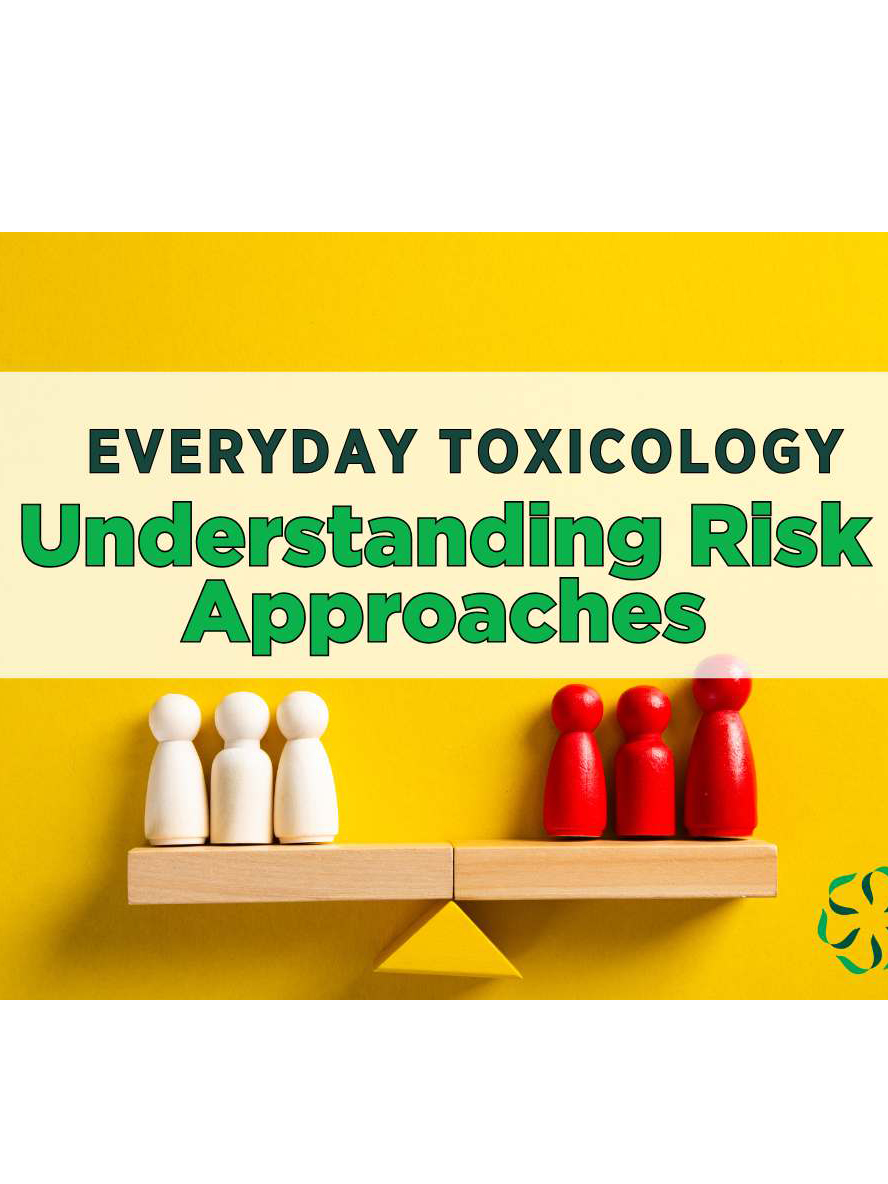
News from CRIS: Understanding Risk Assessment Approaches
November 3, 2025
Ever wonder how regulators decide if an ingredient is safe enough to be in your food? The Center for Research on Ingredient Safety explores the science and philosophy behind these critical decisions.
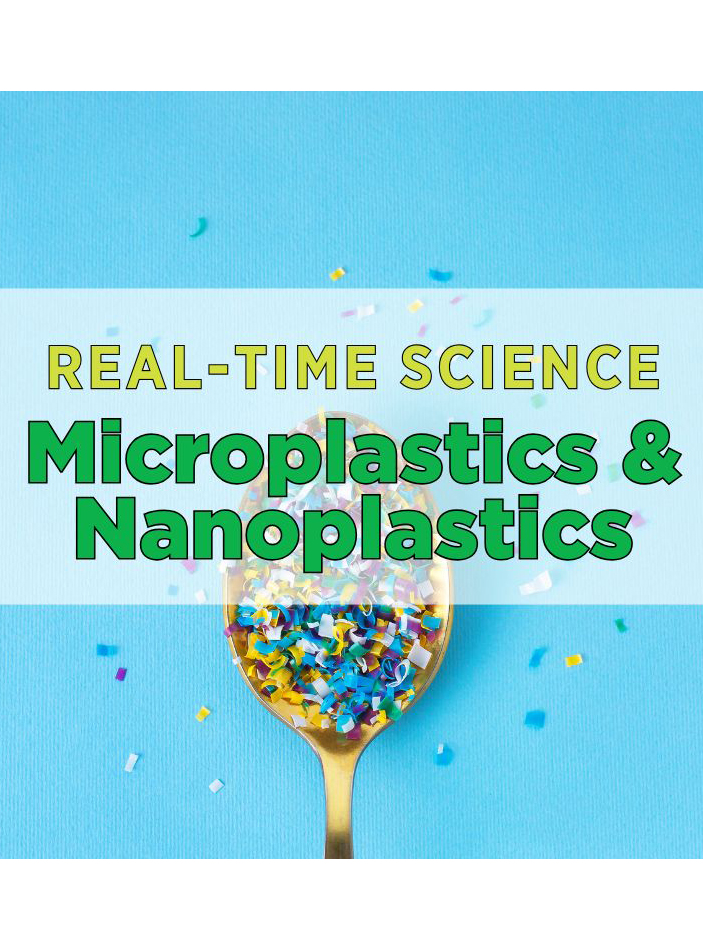
News from CRIS: Real-time Science - Microplastics and Nanoplastics
October 20, 2025
Plastics are part of our everyday life; we use them to ensure the foods and products we use are safer, more sustainable, and more convenient. As we’ve incorporated plastics into our lives, new questions have been raised about what happens when these materials break down into smaller pieces. In this post, the Center for Research on Ingredient Safety looks at microplastics and nanoplastics.

News from CRIS: New Review - Seafood & Microplastics Safety
October 13, 2025
Microplastics have become a familiar part of conversations about pollution, plastics, and health. In recent years, many headlines have warned that eating seafood could expose us to plastic particles, which has led to some people’s increased concern about the safety of fish and shellfish. A new paper published in Environmental Science & Technology Letters and coauthored by CRIS director Norbert Kaminski, Ph.D., finds that, based on the current peer-reviewed scientific literature, seafood is less risky than many presume.

News from CRIS: Everyday Toxicology - Metabolism
October 6, 2025
In this post, the Center for Research on Ingredient Safety looks at metabolism to better understand how it’s used to determine ingredient safety.

News from CRIS: In the News - Polyvinyl Alcohol
September 30, 2025
Recently, we’ve seen folks in the media raise concerns about polyvinyl alcohol (PVA) and potential human and environmental safety issues surrounding the compound’s use in dishwasher and laundry pods. In this post, the Center for Research on Ingredient Safety explores the evidence and safety around dishwasher pods.

2025 CRIS Annual Science Symposium: Communicating Chemical Ingredient Safety for Today & Tomorrow
September 16, 2025
If you couldn’t make it to the 2025 Science Symposium focused on effectively communicating the safety of chemical ingredients today and tomorrow, don’t worry! You can still catch up on all the insightful sessions. Most are now available for you to watch on YouTube.

Cinzori Awarded Prestigious NIH F31 Fellowship
September 3, 2025
EITS and Human Nutrition graduate student, Maria Cinzori, was recently selected to receive the NIH Ruth L. Kirschstein National Research Service Award for Individual Predoctoral Fellows (F31). The prestigious fellowship will support Cinzori in enhancing her training in environmental epidemiology, clinical pregnancy health outcomes, and science communication related to the implications of chemical exposures in pregnancy.

Dr. Kyle Poulsen Joins IIT-Affiliated Faculty
August 18, 2025
The IIT is pleased to welcome Dr. Kyle Poulsen as an affiliated faculty member.

MSU SRC Transitions Leadership Roles
August 14, 2025
The MSU Superfund Research Center transitions to new leadership roles with Dr. Norbert Kaminski stepping down to Deputy Director and Dr. Timothy Zacharewski taking on the role of Director.

Johnson and Team Earn New Awards to Advance Research Goals on the MSU SRC
August 12, 2025
Dr. Brian Johnson and his team have recently earned two awards to determine the commercial potential of two unique inventions related to advanced in vitro cell culture models.

News from CRIS: Community Request - Corn Syrup
July 14, 2025
Corn syrup has become one of the most talked-about and misunderstood ingredients on food labels. It’s often confused with high-fructose corn syrup and gets grouped into broad fears about “added sugars.” But what is corn syrup exactly, and should you be avoiding it? In this community request blog post, the Center for Research on Ingredient Safety looks at corn syrup.

IIT Update Newsletter June 2025
June 27, 2025
The June 2025 IIT Update Newsletter is now available to view online. We hope you will take the time to browse through the newsletter and keep up-to-date with all of the IIT's latest news.

IIT Welcomes New EITS Students
June 25, 2025
The IIT is pleased to welcome several new students to the Environmental and Integrative Toxicological Sciences (EITS) multi-disciplinary graduate program.

News from CRIS: What's the Risk? Alcohol Consumption
June 23, 2025
You’ve probably seen the headlines suggesting “No amount of alcohol is safe”. Or maybe you’ve heard, “the risk to the drinker’s health starts from the first drop of any alcoholic beverage.” Although that information seems to be unsettling, the Center for Research on Ingredient Safety looks to see if it’s true. Let’s break it down using real data.

News from CRIS: Exploring Gold-Standard Science
June 16, 2025
In prior posts, the Center for Research on Ingredient Safety has discussed at a high level how to analyze a research study and how decisions are made by understanding the weight of evidence. In this post, they will look deeper to help identify key characteristics of a quality (i.e., well-designed and executed) study.

News from CRIS: Special Edition - Mapping the MAHA Report
June 2, 2025
The release of The MAHA Report–Make Our Children Healthy Again: Assessment has generated a tremendous amount of headlines, as well as considerable confusion. Since there are more than enough people and organizations opining on the report, we’ll spare you our thoughts. Instead, the Center for Research on Ingredient Safety has opted to help provide clarity, nuance, and understanding for folks who are curious or may have other questions about the CRIS-relevant topics the report addresses. We’ve mapped the key topics it raised to our clear, science-backed explainers.

IIT Wraps Up Spring Seminar Series 2025
May 22, 2025
The IIT was delighted to once again host the IIT Seminar Series this spring with three exciting seminars including the 4th Annual Jerry Hook Distinguished Lectureship.
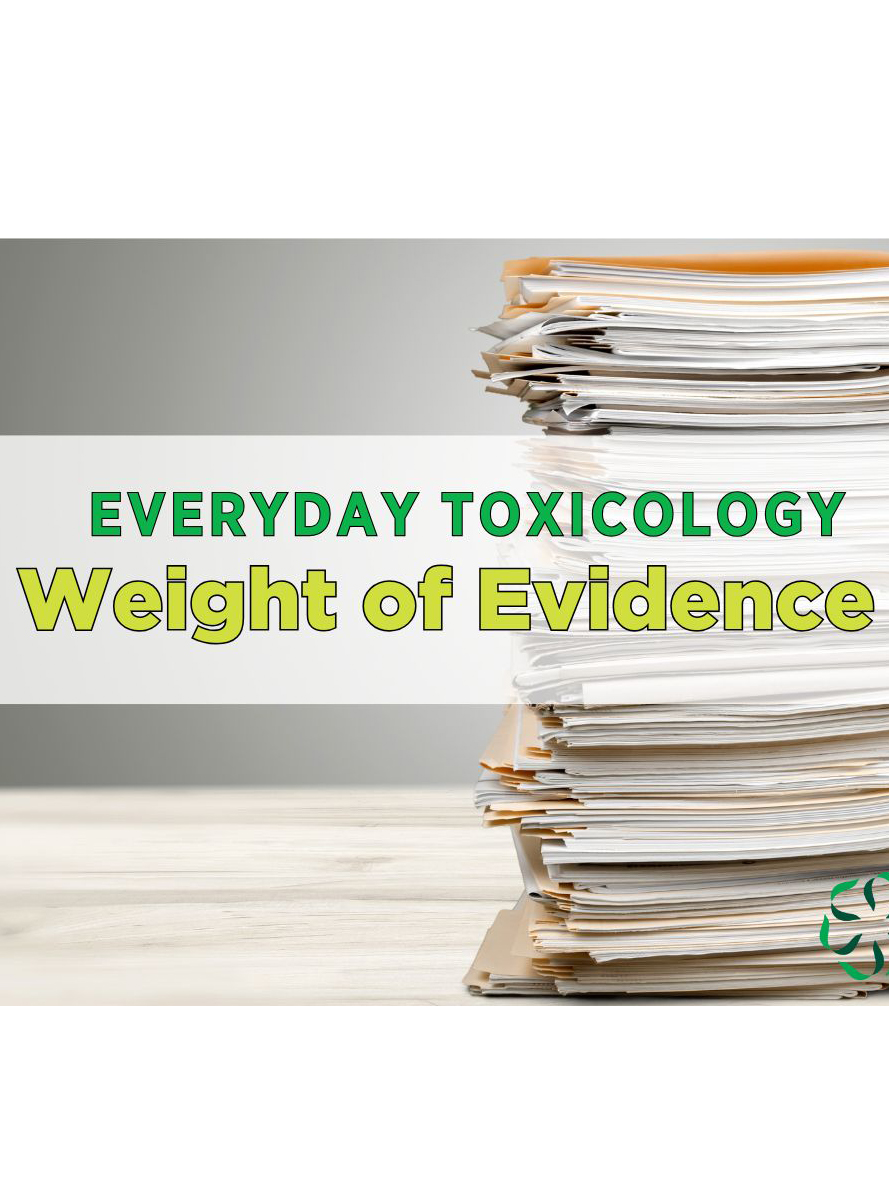
News from CRIS: Everyday Toxicology - Weight of Evidence
May 19, 2025
If you’ve ever wondered how scientists decide whether an ingredient is safe to eat, use, or breathe in, especially when different studies say different things, you’re not alone. One term experts often use is “weight of evidence.” But what does that really mean? In this post, the Center for Research on Ingredient Safety explores the Weight of Evidence framework.

Two EITS Students Receive Awards
May 6, 2025
Two Environmental and Integrative Toxicological Sciences (EITS) graduate students, Joel Marty and Jacob Reynolds, recently received prestigious awards from their respective departments and colleges.
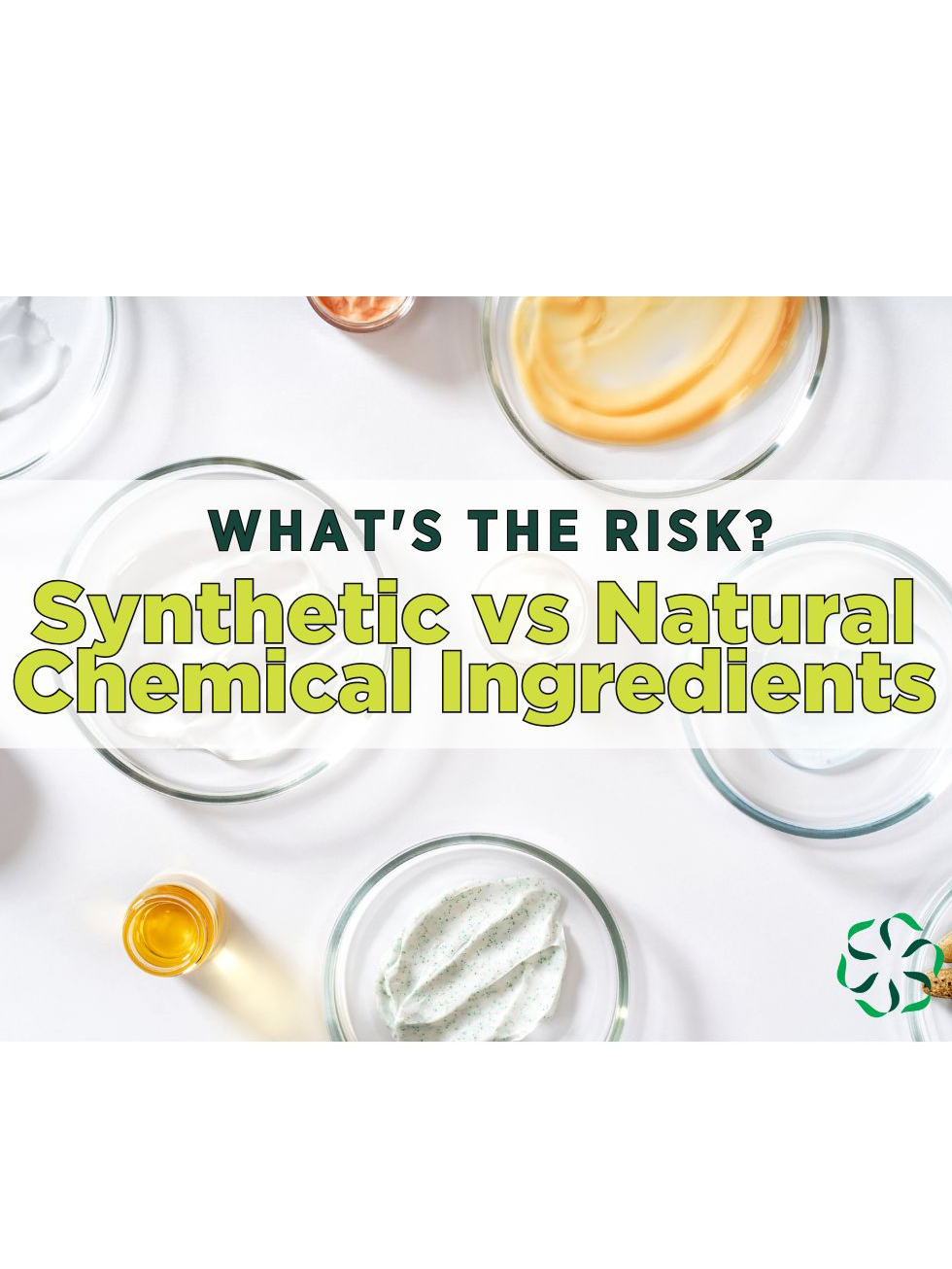
News from CRIS: What's the Risk? Synthetic vs. Natural Chemical Ingredients
May 5, 2025
We see continued conversations about synthetic food ingredients, but what are they, and how do they differ from natural ones? In this post, the Center for Research on Ingredient Safety looks at synthetic vs. natural ingredients.

Li Receives William J. Beal Outstanding Faculty Award
April 29, 2025
IIT-affiliated faculty member Dr. Hui Li was selected as one of ten MSU faculty to receive the William J. Beal Outstanding Faculty Award in 2025.

McCabe Named AAAS Fellow
April 10, 2025
IIT-affiliated faculty member Dr. Laura McCabe was recently recognized as a 2024 fellow of the American Association for the Advancement of Science (AAAS).

Luyendyk Appointed College of Vet Med's Associate Dean for Research and Graduate Studies
April 8, 2025
IIT-affiliated faculty member Dr. James Luyendyk was recently named the College of Veterinary Medicine's Associate Dean for Research and Graduate Studies.

News from CRIS: Trending - GRAS Loophole?
April 7, 2025
Recently, the Department of Health and Human Services leadership has suggested that the GRAS process needs to be changed. In this post, the Center for Research on Ingredient Safety provides context to help you better understand what GRAS is and isn’t.

IIT Affiliates Succeed at 64th SOT Meeting in FL
April 3, 2025
Students and faculty of the MSU Institute for Integrative Toxicology were excited to attend and present at this year’s 64th annual Society of Toxicology (SOT) meeting held in Orlando, Florida.

IIT Annual Report 2024
April 1, 2025
The 2024 IIT Annual Report is now available to view online. We hope you will take the time to browse through the report and keep up-to-date with all of the IIT's latest news and accomplishments.

News from CRIS: Community Request - Diacetyl
March 31, 2025
In this community request, the Center for Research on Ingredient Safety looks at diacetyl, a compound that’s caused safety confusion.

News from CRIS: In the News - Toxic Cookies?
March 17, 2025
We’ve seen concerns about the safety of Girl Scouts cookies making the rounds in the news. In this post, the Center for Research on Ingredient Safety explores the claims around toxic cookies.

IIT Welcomes New EITS Students
March 13, 2025
The IIT is pleased to welcome several new students to the Environmental and Integrative Toxicological Sciences (EITS) multi-disciplinary graduate program.

News from CRIS: New Research - Preservative tBHQ
March 10, 2025
New research in part funded by the Center for Research on Ingredient Safety (CRIS), now live in Frontiers Immunology, discusses the preservative ingredient tBHQ. In this post, CRIS looks at tBHQ and its impact on immune systems.

News from CRIS: Trending - Understanding Health, Wellness & Medicine
March 4, 2025
Wellness and medicine all aim to improve health—but only one is backed by science. Here’s what you need to know.

Read the Latest MSU Superfund Research Center Newsletter
February 27, 2025
The most recent MSU Superfund Research Center Newsletter is now available to view online. We hope you will take the time to browse through the newsletter and keep up-to-date with all of the MSU SRC's latest news.

News from CRIS: Trending - Prebiotic Soda
February 24, 2025
Prebiotic sodas are gaining popularity as a health-conscious alternative to traditional soft drinks. In this post, the Center for Research on Ingredient Safety explores prebiotic sodas.

News from CRIS: In the News - Nanoplastics
February 17, 2025
A recent study discussing nanoplastic accumulation in the body is making headlines. In this post, the Center for Research on Ingredient Safety looks at the headlines and provides clarity.

News from CRIS: Protective Nutrition - Disease Prevention
February 10, 2025
In this series, the Center for Research on Ingredient Safety explores how nutrition helps protect and support our bodies. In this post, they look at disease prevention through nutrition.

Dr. Yun Liang Joins IIT-Affiliated Faculty
February 3, 2025
The IIT is pleased to welcome Dr. Yun Liang as an affiliated faculty member.

News from CRIS: Protective Nutrition - Heavy Metals
January 27, 2025
In this series, the Center for Research on Ingredient Safety explores how nutrition helps protect and support our bodies.

News from CRIS: Zagorski Discusses Black Plastic Utensils on the Today Show
January 23, 2025
Should you throw away your black plastic cooking utensils? CRIS researcher Dr. Joe Zagorski weighed in with evidence on the Today Show recently.

News from CRIS: Protective Nutrition - Overview
January 21, 2025
In this series, the Center for Research on Ingredient Safety explores how nutrition helps protect and support our bodies.

Dr. Karilyn Sant Joins IIT-Affiliated Faculty
December 16, 2024
The IIT is pleased to welcome Dr. Karilyn Sant as an affiliated faculty member.

News from CRIS: What's the Risk? Raw Flour
December 10, 2024
Flour is a pantry staple found in almost every household, yet it is often overlooked when it comes to safe handling and consumption. So, as holiday baking ramps up, the Center for Research on Ingredient Safety explores the risk of raw flour.

IIT Update Newsletter December 2024
December 9, 2024
The December 2024 IIT Update Newsletter is now available to view online. We hope you will take the time to browse through the newsletter and keep up-to-date with all of the IIT's latest news.

Celebrating Student Research at the 2024 EITS Research Evening
December 6, 2024
The IIT’s Annual Research Evening showcased trainees in the Environmental and Integrative Toxicological Sciences Graduate Training program and their accomplishments. This year’s event took place on Thursday, December 5, 2024 in the Lincoln Room at the MSU Kellogg Center.

News from CRIS: Trending - Iodine
December 2, 2024
Recent headlines are bringing awareness to an iodine mineral deficiency growing in many parts of the world. In this post, the Center for Research on Ingredient Safety looks at the mineral iodine.

News from CRIS: Trending - Pasteurization
November 18, 2024
We’ve seen a lot of conversation and confusion around pasteurization and how it’s used in a food safety setting. In this blog post, the Center for Research on Ingredient Safety takes a look at pasteurization.

News from CRIS: Seed Oils - What's the Risk?
November 11, 2024
We’ve seen concerns about seed oil pickup in recent weeks. In this post, the Center for Research on Ingredient Safety looks at the risks associated with seed oils.

Trosko Included in Marquis Who's Who
November 4, 2024
IIT-affiliated faculty member, Dr. James Trosko, has recently been included in Marquis Who's Who which chronicles the lives of the most accomplished individuals and innovators from every significant field of endeavor, including politics, business, medicine, law, education, art, religion and entertainment.

Exciting Changes from CRIS: Revitalized Brand, New Website & More
November 4, 2024
The Center for Research on Ingredient Safety is excited to unveil the revitalization of their brand, along with a new website, and upgraded newsletter—all designed to better serve the CRIS community and enhance user experience.

News from CRIS: Sugar and Sweetener - Common Questions
October 28, 2024
As many people prepare to celebrate Halloween, the Center for Research on Ingredient Safety answers some common questions on sugar and sweeteners circulating on the Internet.

IIT Welcomes New EITS Students
October 15, 2024
The IIT is pleased to welcome several new students to the Environmental and Integrative Toxicological Sciences (EITS) multi-disciplinary graduate program.

2024 CRIS Annual Science Symposium: Plastic Recycling & Chemical Contaminants in Recycled Plastic
October 14, 2024
If you couldn’t make it to the 2024 Science Symposium focused on plastic recycling and chemical contaminates in recycled plastic, don’t worry! You can still catch up on all the insightful sessions. Most are now available for you to watch on YouTube.

News from CRIS: Update - Botanicals
October 7, 2024
In this post, the Center for Research on Ingredient Safety takes another look at botanical ingredients.

MSU SRC Annual Community Health Survey Results
October 1, 2024
The MSU SRC Community Engagement Core recently shared the findings for year two of their Annual Community Health Survey.

News from CRIS: Community Request - Mineral Oil
August 5, 2024
In this community request, the Center for Research on Ingredient Safety looks at mineral oil, an ingredient found in cosmetics, foods, household products, and pharmaceuticals.

News from CRIS: In the News - Metals in Tampons
July 29, 2024
A new study on metal and metalloid contaminants found in tampons has made headlines. In this post, the Center for Research on Ingredient Safety looks at the metals and metalloids in tampons.

Leinninger Receives Promotion & Red Cedar Distinguished Professorship
July 18, 2024
IIT-affiliated faculty member Gina Leinninger was recently promoted to full professor and was also awarded the title of Red Cedar Distinguished Professor for her leadership and research achievements.

Two IIT-Affiliated Faculty Receive Promotions
July 16, 2024
The IIT would like to congratulate affiliated faculty members, Dr. Kin Sing Lee and Dr. Ilce Medina Meza, who recently received faculty promotions to Associate Professor.

News from CRIS: Trending - Essential Metals
July 15, 2024
With metals found in our foods and beverages making the headlines, in this post the Center for Research on Ingredient Safety looks at essential metals that we need for our bodies to function.

IIT Update Newsletter July 2024
July 9, 2024
The July 2024 IIT Update Newsletter is now available to view online. We hope you will take the time to browse through the newsletter and keep up-to-date with all of the IIT's latest news.
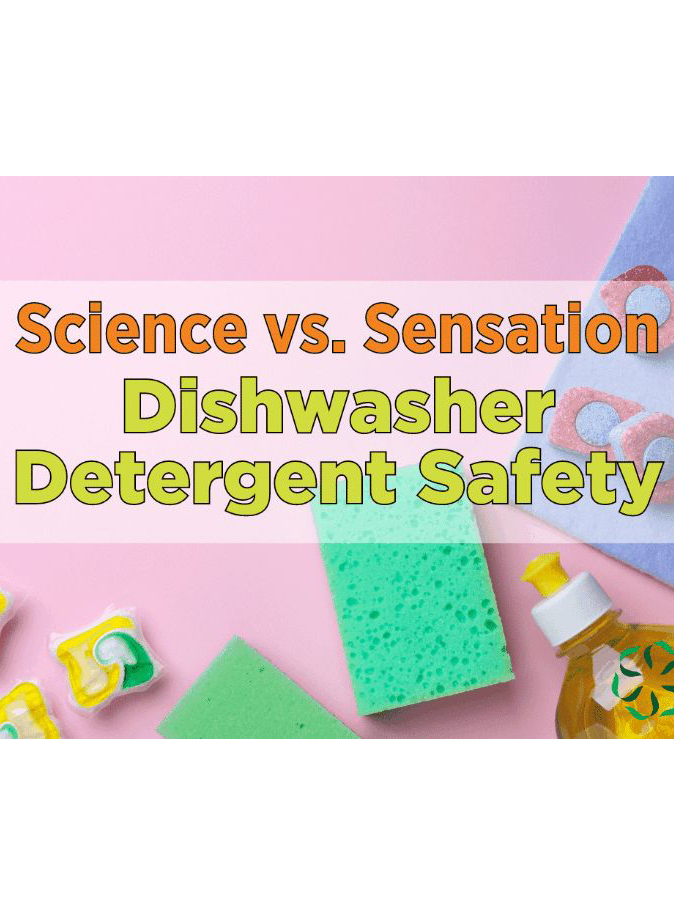
News from CRIS: Science vs. Sensation - Dishwasher Detergent Safety
July 8, 2024
A few viral videos are making the rounds on social media, raising questions about dishwasher detergent safety. In this post, the Center for Research on Ingredient Safety digs into the science to help put the risk into context.

News from CRIS: In the News - Spicy Food Safety
June 24, 2024
A recent headline and recall on spicy noodles has folks wondering, can a food contain too much capsaicin? In this post, the Center for Research on Ingredient Safety reviews the spicy food ingredient capsaicin.

MSU SRC Hosts Computational Systems Toxicology: Modeling and Informatics Workshop
June 20, 2024
The MSU SRC recently hosted the Computational Systems Toxicology: Modeling and Informatics (CSTMI) Workshop on May 6 - 9, 2024 at the Food Safety and Toxicology Building on Michigan State’s campus.

News from CRIS: Everyday Toxicology - Exposure
June 10, 2024
Scientists frequently talk about dose, dose rate, and exposure. But, what is exposure? How is our body exposed to ingredients? In this post, the Center for Research on Ingredient Safety looks at exposure and routes of exposure.

Lewandowski Receives 2024 Krehbiel Distinguished Staff Award from CVM
May 30, 2024
Ryan Lewandowski received the 2024 Krehbiel Distinguished Staff Award from the College of Veterinary Medicine. Lewandowski is the long-time manager of the Laboratory for Experimental and Toxicologic Pathology led by Drs. Jack Harkema and James Wagner.

News from CRIS: Chemical Weed Killer
May 20, 2024
Chemical weed killers often raise concerns among gardeners and homeowners. In this post, the Center for Research on Ingredient Safety provides a general overview of chemical weed killers.

News from CRIS: Trending - Mineral Sunscreen
May 6, 2024
People continue to be interested in mineral-based products. The Center for Research on Ingredient Safety looks at the safety of titanium dioxide and zinc oxide-based mineral sunscreens.

News from CRIS: What's the Risk? Cannabidiol (CBD)
April 22, 2024
Cannabidiol, more commonly known as CBD, has surged in popularity, heralded as a miracle cure-all for a vast array of health issues from anxiety and pain to epilepsy and sleep disorders. In this post, the Center for Research on Ingredient Safety looks at CBD.

IIT Affiliates Succeed at 63rd SOT Meeting in UT
April 11, 2024
Students and faculty of the MSU Institute for Integrative Toxicology were excited to attend and present at this year’s 63rd annual Society of Toxicology (SOT) meeting held in Salt Lake City, Utah.

News from CRIS: Trending - Sulfites
April 8, 2024
Sulfite ingredients are in many foods and beverages. In this post, the Center for Research on Ingredient Safety explores sulfite safety.

News from CRIS: Trending - Sulfates
April 1, 2024
We’ve seen personal care and cosmetic products move away from sulfate ingredients. In this post, the Center for Research on Ingredient Safety explores sulfate ingredients in cosmetics and food and their safety.

News from CRIS: New Research - Pyrrolizidine Alkaloids
March 25, 2024
In this post, we explore new CRIS research on pyrrolizidine alkaloids and how it may impact regulatory decision-making processes.

News from CRIS: Trending - Lanolin
March 18, 2024
We've seen folks recommend lanolin to replace synthetic or mineral-based ingredients. In this post, the Center for Research on Ingredient Safety explores the safety of lanolin.

IIT Faculty Honored at 2024 MSU Investiture Ceremony
March 12, 2024
Three IIT-affiliated faculty were among those honored at MSU's 2024 Investiture for Endowed Faculty on March 4, 2024: Dr. Honglei Chen, Dr. Norbert Kaminski and Dr. James Luyendyk.

News from CRIS: In the News - Heavy Metals in Spices
March 11, 2024
Cinnamon and other spices are making headlines due to heavy metal contamination. In this post, the Center for Research on Ingredient Safety discusses heavy metals found in spices and how you can avoid them.

Luyendyk Named Vice President-Elect of SOT
March 5, 2024
The IIT would like to offer our congratulations to Dr. James P. Luyendyk, IIT-affiliated faculty member in the Department of Pathobiology and Diagnostic Investigation, who was recently elected vice president-elect for the Society of Toxicology. His election to this office at the SOT will lead to his serving as vice president and then as president of the society.

News from CRIS: Alpha-Hydroxy Acids (AHA)
February 26, 2024
We find alpha hydroxy acid (AHA) ingredients in many popular cosmetic products, and influencers on social media continue to promote AHA ingredients. This post by the Center for Research on Ingredient Safety explores alpha hydroxy acids and what they mean for you.
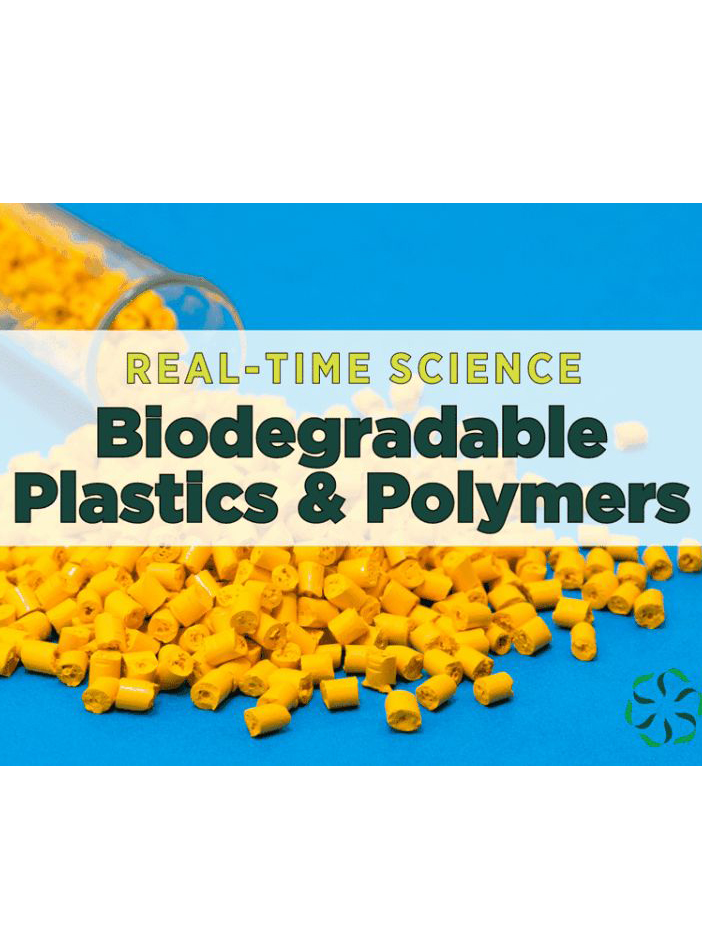
News from CRIS: Real-time Science - Biodegradable Plastics & Polymers
February 12, 2024
Plastic and polymer science continues to advance as researchers develop polymer materials that can degrade with limited human intervention. In this post, the Center for Research on Ingredient Safety looks at biodegradable plastics and polymers.

News from CRIS: Real-time Science - Plastic & Polymer-based Packaging
February 6, 2024
In this post, the Center for Research on Ingredient Safety looks at plastic and polymer-based packaging and explores the risks and benefits of these materials.

News from CRIS: Real-time Science - What's Plastic?
January 30, 2024
This seemingly innocuous question is complicated. In this post, the Center for Research on Ingredient Safety will explore the current definitions and understanding of plastics.
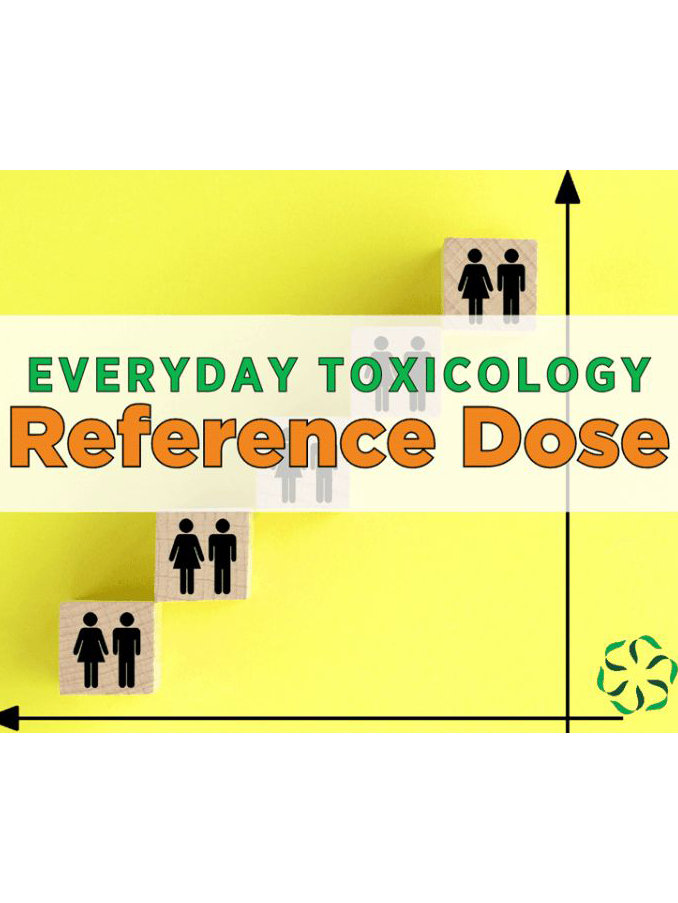
News from CRIS: Everyday Toxicology - Reference Dose
January 23, 2024
In this post, the Center for Research on Ingredient Safety looks at how researchers determine safe doses.

IIT Update Newsletter December 2023
December 19, 2023
The December 2023 IIT Update Newsletter is now available to view online. We hope you will take the time to browse through the newsletter and keep up-to-date with all of the IIT's latest news.

Tewari-Singh Awarded R01 Grant by National Eye Institute
December 14, 2023
IIT-affiliated faculty member Dr. Neera Tewari-Singh was recently awarded a R01 grant from the National Eye Institute for her project, "Understanding Mustard Vesicants Distribution and Toxicity in the Eye Using In Vivo and In Silico Models." Tewari-Singh will receive $1,380,587 to perform this research over the next three years.

News from CRIS: Titanium Dioxide 2023
December 4, 2023
Folks have reached out wanting an update on the safety profile of titanium dioxide given the latest report. In this post, the Center for Research on Ingredient Safety hopes to answer the latest safety concerns.

EITS Student Isha Khan Publishes Exciting Research on the Role of AHR in Human Hematopoiesis
November 28, 2023
EITS graduate student, Isha Khan, in collaboration with a team of scientists including Peer Karmaus, Anthony Bach, Robert Crawford and Norbert Kaminski, recently published exciting research on the role of the aryl hydrocarbon receptor (AHR) in human hematopoiesis, the process by which blood cells are formed.

Tiedje Recognized as One of MSU's Most Highly Cited Researchers of 2023
November 21, 2023
IIT-affiliated faculty member, Dr. James Tiedje, has been recognized as one of five Michigan State University researchers named in the 2023 Highly Cited Researchers List compiled by Clarivate Analytics.

News from CRIS: Trending - Brominated Vegetable Oil (BVO)
November 6, 2023
The safety status of brominated vegetable oil (BVO) in the USA may change in the coming months. In this post, the Center for Research on Ingredient Safety looks at the safety and changes of BVO.

Three EITS Students Receive Awards at MI SOT Annual Fall Meeting
October 26, 2023
The Michigan Regional Chapter of the Society of Toxicology recently held their annual fall meeting, "One Health in Toxicology," on October 13, 2023. Three EITS students received awards at this meeting.

Li Receives Two Prestigious Awards this Fall
October 9, 2023
IIT-affiliated faculty member Dr. Hui Li has been selected for two prestigious awards this fall.

Carignan Honored by the International Society of Exposure Science
September 28, 2023
IIT-affiliated faculty member, Dr. Courtney Carignan, was recently selected to receive the Joan M. Daisey Outstanding Young Scientist Award from the International Society of Exposure Science.

News from CRIS: GRASE - What are GRASE ingredients?
September 26, 2023
In this post, the Center for Research on Ingredient Safety looks at Generally Recognized as Safe and Effective (GRASE) ingredients.

News from CRIS: New Evidence, New Outlook - Phenylephrine
September 20, 2023
The ingredient phenylephrine found in over-the-counter decongestant medications isn’t as effective as previously thought. In this post, the Center for Research on Ingredient Safety examines the new evidence for this popular ingredient.

Hegg and Colleagues Receive Prestigious T35 Grant to Advance Veterinary Education and Biomedical Research
September 12, 2023
IIT-affiliated faculty member Dr. Colleen Hegg, along with her colleague Dr. Sri Sreevatsan, has recently achieved a significant milestone by being awarded a highly coveted T35 grant.

Strakovsky Featured for her Research on Chemical Exposure During Pregnancy and Beyond
September 7, 2023
IIT-affiliated faculty member Dr. Rita Strakovsky has devoted her career to studying how chemical exposure affects mothers and their developing babies. Her research was recently featured in an article by Cameron Rudolph on the College of Agriculture and Natural Resources website.

News from CRIS: Trending - Melatonin
August 21, 2023
Melatonin is a popular supplement in many products, from gummies to tea to tinctures. But is this ingredient safe? In this post, the Center for Research on Ingredient Safety looks at melatonin.

Harkema Featured for his Long-Term Research on Air Pollutants
August 15, 2023
IIT-affiliated faculty member Dr. Jack Harkema has devoted his nearly 30-year career at Michigan State University to understanding the health implications of commonly encountered environmental and occupational air pollutants found in both urban and rural communities. His research was recently featured in an article by Holly Whetstone at MSU AgBioResearch.

News from CRIS: Trending - Food Contamination
August 8, 2023
A new, trending food-focused documentary brought up many concerns about food contamination. In this post, the Center for Research on Ingredient Safety looks at food safety and contamination.

News from CRIS: Trending - Borax
August 1, 2023
A recent trend has taken over the Internet, and we've seen folks choose to drink borax. In this post, the Center for Research on Ingredient Safety looks at the safety of borax and borax consumption.

IIT Update Newsletter July 2023
July 28, 2023
The July 2023 IIT Update Newsletter is now available to view online. We hope you will take the time to browse through the newsletter and keep up-to-date with all of the IIT's latest news.

News from CRIS: Trending - Electrolytes
July 24, 2023
As the heat ramps up in parts of the world, the Center for Research on Ingredient Safety looks at the electrolytes added to many beverages and how they can help us remain healthy.

News from CRIS: Trending - Sodium & Salt
July 18, 2023
In this post, the Center for Research on Ingredient Safety looks at a staple ingredient, sodium.

Wu Named University Distinguished Professor
July 12, 2023
IIT-affiliated faculty member Dr. Felicia Wu was recently named as a University Distinguished Professor in recognition of her outstanding achievements in teaching, research and public service.

News from CRIS: Insect Repellent - Permethrin
July 10, 2023
In this post, the Center for Research on Ingredient Safety looks at a community requested ingredient, permethrin, a common insect repellent.

News from CRIS: Research Partnership – MSU, Corewell Health partner to investigate effects of lead exposure on pregnant women, newborns
June 21, 2023
Researchers with Michigan State University's Center for Research on Ingredient Safety and Corewell Health are partnering to study the health effects of lead poisoning in the Grand Rapids area.

Carignan & Team Publish Study on Self-Collected PFAS Blood Testing
June 20, 2023
IIT-affiliated faculty member, Dr. Courtney Carignan, recently published a study on improved self-collection PFAS blood tests developed for people in contaminated communities.

News from CRIS: In the News - Titanium Dioxide & Regulatory Agencies
June 13, 2023
The Center for Research on Ingredient Safety has written about titanium dioxide and California making headlines. In this post, they look at why many researchers and regulatory agencies agree titanium dioxide is safe.

Tiedje Elected to the American Academy of Arts & Sciences
June 8, 2023
IIT-affiliated faculty member, Dr. James Tiedje joins the 2023 elite cohort of the American Academy of Arts and Sciences.

Lee Receives Two Prestigious Research Awards from NIH
June 6, 2023
IIT-affiliated faculty member, Dr. Kin Sing Lee, recently received two prestigious research awards from the National Institutes of Health.

News from CRIS: In the News - Titanium Dioxide Regulation in California
June 5, 2023
Titanium dioxide continues to make headlines. In this post, the Center for Research on Ingredient Safety takes another look at titanium dioxide safety and the proposed California ban. Let’s dive into titanium dioxide.

News from CRIS: Trending - Sun Safety & Alpha-hydroxy Acids
May 22, 2023
Alpha-hydroxy acids can be an effective skincare ingredient, but it’s important to protect your skin from the sun.

News from CRIS: Trending - Colloidal & Ionic Silver
May 16, 2023
In recent years, colloidal silver has gained popularity as a health supplement, but is it safe? This blog post delves into ionic and colloidal silver safety to help you understand its potential risks and benefits.
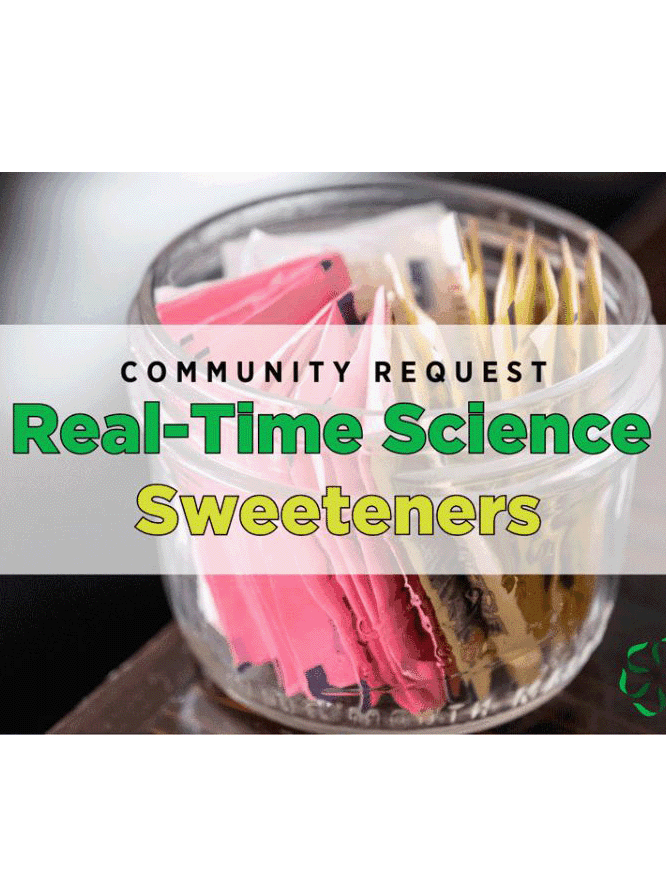
News from CRIS: Real-time Science - Sweeteners
May 9, 2023
Science evolves as evidence builds to determine if an ingredient, contaminant, or technology is safe. However, headlines are often faster than the research on an ingredient's harm or safety profile. This community request explores Artificial Sweeteners.
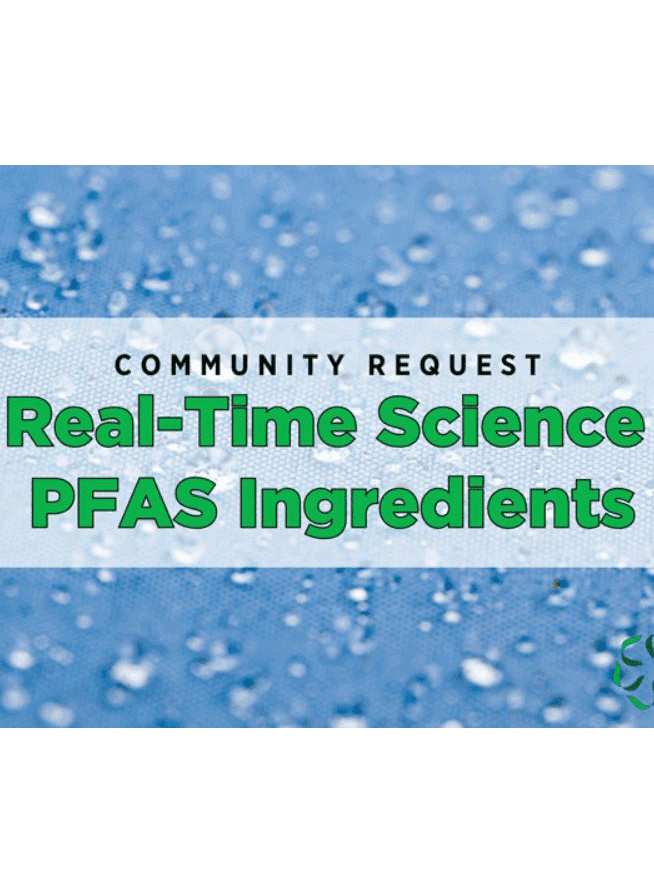
News from CRIS: Real-time Science - PFAS Compounds
May 2, 2023
In this post we look at a community request: PFAS compounds.

Johnson Receives Withrow Teaching Excellence Award
April 25, 2023
IIT-affiliated faculty member, Dr. Brian Johnson, received the Withrow Teaching Excellence Award from the College of Engineering.

IIT Affiliates Succeed at 62nd SOT Meeting in TN
April 17, 2023
Students and faculty of the MSU Institute for Integrative Toxicology were excited to attend and present at this year’s 62nd annual Society of Toxicology (SOT) meeting held in Nashville, Tennessee.
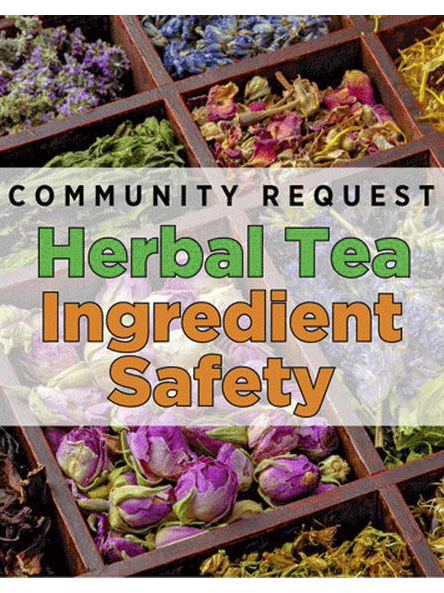
News from CRIS: Herbal Tea
April 4, 2023
In this community-requested blog post, the Center for Research on Ingredient Safety looks at herbal tea safety and explores a few common herbal tea ingredients.

Moerland Recipient of Two Prestigious Fellowship Awards
March 28, 2023
EITS graduate student, Jessica Moerland, was recently selected for two prestigious fellowship awards for her research on the pharmacological modulation of the lung tumor microenvironment.

News from CRIS: In the News - Cultivated Meat
March 28, 2023
Cultivated meat is making headlines. In this post, the Center for Research on Ingredient Safety looks at the safety and regulatory framework around cultivated meat.

News from CRIS: Thresholds – Trace Contaminate and Residue Regulations in Packaging
March 21, 2023
In this post, the Center for Research on Ingredient Safety looks at trace contaminates and residue that may be found in packaging and how they’re regulated for safety in the USA.
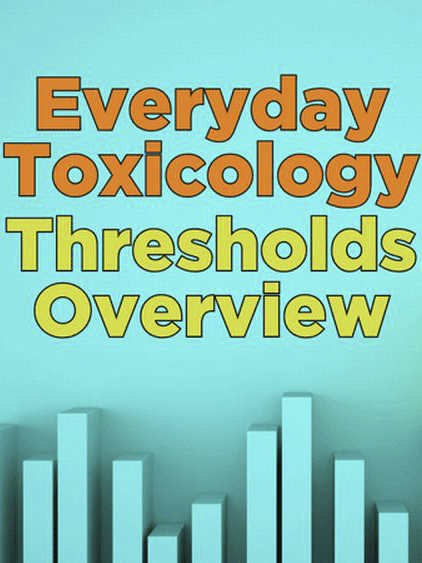
News from CRIS: Everyday Toxicology - Thresholds Overview
March 14, 2023
In this series, the Center for Research on Ingredient Safety looks at a critical toxicological concept that underpins the regulations and safety standards that keep the products we use and consume safe: Thresholds.

News from CRIS: Trending - Vegan & Plant-based Labeling
March 7, 2023
We’ve seen an uptick of folks interested in understanding specific marketing labels, specifically vegan, plant-based, and animal-free. In this post, the Center for Research on Ingredient Safety looks at marketing labels and explores what they mean and what they don’t mean.

News from CRIS: Trending - Potassium Bromate
March 1, 2023
Recently we've seen concerns around potassium bromate make headlines. In this post, the Center for Research on Ingredient Safety looks at potassium bromate safety.

News from CRIS: Trending - Petroleum Jelly
February 22, 2023
We've seen misinformation and confusion around petroleum jelly make its way around the Internet. In this post, the Center for Research on Ingredient Safety looks at petroleum jelly.

News from CRIS: Trending - Silicon Dioxide
February 15, 2023
Silicon dioxide is abundant in our environment, but concerns about this everyday ingredient continue to pop up. In this post, the Center for Research on Ingredient Safety looks at silicon dioxide.

News from CRIS: Trending - Non-Alcoholic Beer and Hops Flavored Seltzer Water
February 7, 2023
We’ve seen folks’ interest in sober bars, also known as temperance bars, increase over the past year. In this post, the Center for Research on Ingredient Safety looks at popular drinks found in these establishments, non-alcoholic beer and hops-flavored seltzer waters.

News from CRIS: In the News - Cannabidiol (CBD) Regulations
January 31, 2023
The Center for Research on Ingredient Safety looks at CBD science and regulation to understand the FDA’s regulatory decision.

Tiedje Receives ASM Lifetime Achievement Award
January 26, 2023
IIT-affiliated faculty member, Dr. James Tiedje, was recently selected for the 2023 Lifetime Achievement Award by the American Society of Microbiology.

News from CRIS: In the News - Heavy Metals in Food
January 24, 2023
While baby food launched public concerns around heavy metals, more testing shows heavy metals in various food products. In this post, the Center for Research on Ingredient Safety explores heavy metals in food.

News from CRIS: In the News - Modernization of Cosmetics Regulation Act Passes
January 10, 2023
The United States passed new legislation that modernizes the cosmetic laws, but what does that mean? In this post, the Center for Research on Ingredient Safety looks at the new legislation.

News from CRIS: In the News - Titanium Dioxide Safety Update
December 6, 2022
European lawmakers take a second look at titanium dioxide.

News from CRIS: In the News - Lead in Children's Sippy Cups
November 29, 2022
In this post, the Center for Research on Ingredient Safety takes a look at the sippy cups recalled for potential lead exposure hazards.

News from CRIS: Trending - Wine
November 15, 2022
As the holiday season comes into full swing, the Center for Research on Ingredient Safety takes a look at an ancient and favorite adult beverage, wine.

News from CRIS: Cooking Oils - Plant-based Oils
November 7, 2022
In their previous post, the Center for Research on Ingredient Safety looked at all cooking oils. In this post, they explore plant-based cooking oils.

IIT Update Newsletter October 2022
October 26, 2022
The October 2022 IIT Update Newsletter is now available to view online. We hope you will take the time to browse through the newsletter and keep up-to-date with all of the IIT's latest news.

News from CRIS: Cooking Oils - Overview
October 24, 2022
As we prepare for the holidays and cooking season, the Center for Research on Ingredient Safety looks at cooking oils and explores their safety.

IIT Successfully Competes for NIEHS Superfund Research Center
October 5, 2022
The Institute for Integrative Toxicology is pleased to share that a team of our multidisciplinary researchers have received a five-year, $10.5 million Superfund Research Program Center (SRP) grant from the National Institute of Environmental Health Sciences to conduct innovative and collaborative biomedical and remediation technology research.

News from CRIS: Trending - Laundry Detergent Enzymes
September 27, 2022
Ever wonder what makes laundry detergent so effective? In this post, the Center for Research on Ingredient Safety explores a common ingredient that helps boost detergent performance, enzymes.

News from CRIS: Trending - Anti-nutrients
September 20, 2022
We all know a balanced diet filled with many different fruits, vegetables, grains, and proteins helps us maintain good health. But, some sources believe the anti-nutrients found in many of these whole foods could potentially cause us harm.

News from CRIS: What's the Risk? - Titanium Dioxide
September 13, 2022
You've read the headlines in the media, now the Center for Research on Ingredient Safety takes a look at the risk of using and consuming Titanium Dioxide.

Favor Selected for 2022 Gina M. Finzi Memorial Student Summer Fellowship Program
September 6, 2022
EITS graduate student, Olivia Favor, was selected as one of six recipients to receive the prestigious 2022 Gina M. Finzi Memorial Student Summer Fellowship from the Lupus Foundation of America.

News from CRIS: How to Series - Interpret a Study
August 30, 2022
In the Center for Research on Ingredient Safety's last post, they covered the background needed to interpret a study. In this post, they dig deeper.

News from CRIS: How to Series - Interpret a Study: Background
August 23, 2022
We see and hear information in the news, on social media, and from friends and family. Frequently, people will mention research or a study to validate a fact or prove a point. In this two-part series, the Center for Research on Ingredient Safety explores how to interpret a study.

News from CRIS: What's the Risk? - Zinc Oxide
August 16, 2022
Recently, we’ve noticed people have concerns around zinc oxide and products containing zinc oxide. In this post, the Center for Research on Ingredient Safety explores the risk.

News from CRIS: Trending - Mycotoxins
July 27, 2022
There are many all-natural toxins in the environment. In this post, the Center for Research on Ingredient Safety looks at mycotoxins.

News from CRIS: Trending - Organic Foods
July 14, 2022
In this post, the Center for Research on Ingredient Safety looks at popular organic food labels and explore what it means (and doesn’t mean) for an ingredient to be organic certified.

News from CRIS: What's the Risk? Talc-Based Cosmetic Products
June 14, 2022
We've recently seen folks concerned about talc-based cosmetic products and the potential to contain contaminants like asbestos. In this post, the Center for Research on Ingredient Safety looks at the risks associated with talc-based cosmetics.

News from CRIS: What's the Risk? Food Packaging
June 6, 2022
Recently, there’s been an uptick of concern around packaging and the chemical ingredients and contaminants that could be imparted on our food and beverages. In this post, the Center for Research on Ingredient Safety looks at the risk.

Honglei Chen Joins IIT Affiliated Faculty
June 2, 2022
The IIT is pleased to welcome Dr. Honglei Chen as an affiliated faculty member.

EITS Student Azam Ali Sher Receives Outstanding Doctoral Student Mentor Award from Graduate School
May 26, 2022
EITS graduate student, Azam Ali Sher, recently received the Outstanding Doctoral Student Mentor Award from the Graduate School at MSU.

News from CRIS: How to Series - Removing Pesticide Residue
May 23, 2022
In this series, the Center for Research on Ingredient Safety shares best practices to help you in your daily life. This post looks at safe ways to remove lingering pesticide residue.

IIT-Affiliated Faculty Part of Research Team Awarded $13.5 Million Program Project Grant from NIH
May 17, 2022
Several IIT-affiliated faculty have joined a team of MSU researchers on a recently awarded $13.5 million program project grant from NIH titled, “Perivascular Adipose Tissue (PVAT) as a Central Integrator of Vascular Health.” The Program Project Grant (PPG) involves four projects that will explore different mechanisms of PVAT, a tissue essential to normal functioning of blood vessels.

News from CRIS: Special Edition - Homemade Infant Formula
May 16, 2022
In this special edition, the Center for Research on Ingredient Safety looks at the baby formula recipes making the rounds on the Internet.

News from CRIS: What's the Risk? Pesticide Residues
May 11, 2022
In this series, the Center for Research on Ingredient Safety looks at common products and ingredients we use throughout the spring and summer to explore their safety and toxicity. In this post, they take a look at pesticide residues.

ToxScout: Jobs in the world of toxicology
May 10, 2022
The IIT is pleased to share that we will be sending out a new bi-weekly newsletter, the ToxScout. It will be filled with a variety of recent job postings from across academia, government and industry related to the field of toxicology.

News from CRIS: What's the Risk? Sunscreen
May 9, 2022
In this series, the Center for Research on Ingredient Safety looks at common products and ingredients we use throughout the spring and summer to explore their safety and toxicity. In this post, we take a look at sunscreen ingredients.

News from CRIS: What's the Risk? Repelling Ticks & Mosquitos
May 2, 2022
In this new series the Center for Research on Ingredient Safety looks at common products and ingredients we use throughout the spring and summer to explore their safety and toxicity. This first post will look at ingredients to help repel ticks and mosquitos.

Bhattacharya Receives Withrow Teaching Excellence Award
April 21, 2022
IIT-affiliated faculty member, Dr. Sudin Bhattacharya, received the Withrow Teaching Excellence Award from the College of Engineering.

Mansfield Elected to Fellowship in American Academy of Microbiology
April 18, 2022
IIT-affiliated faculty member, Dr. Linda Mansfield, was recently elected to Fellowship in the American Academy of Microbiology.

IIT Affiliates Succeed at 61st SOT Meeting in CA
April 12, 2022
Students and faculty of the MSU Institute for Integrative Toxicology were excited to attend and present at this year’s 61st annual Society of Toxicology (SOT) meeting held in San Diego, California.

News from CRIS: Dryer Sheet Ingredient Safety
April 11, 2022
This community-requested blog looks at dryer sheets and explores the safety of ingredients that make up this common household product.

News from CRIS: Risk in the News - Artificial Sweeteners a Cancer Risk?
April 4, 2022
Last week we looked at risk and how risk impacts our lives and our decisions. This week, we’re going to look at risk, and data to understand how risk plays a role in our lives.

News from CRIS: Risk - Zero Risk?
March 28, 2022
One of the main concerns we see folks express around ingredient safety is a desire to ensure an ingredient is completely safe with no risk for harm. Is that possible?

MSU Presentations at the 61st Annual SOT Meeting
March 24, 2022
The 61st Annual SOT meeting will take place March 27-31, 2022 in San Diego, California. Please view the attached PDF for a list of all of the MSU IIT faculty and students with presentations at the meeting. Make sure to check out all of the fascinating research happening here at MSU, whether you are attending in person or virtually!

EITS Alumnus Joseph Zagorski Joins CRIS & IIT Faculty
March 21, 2022
Dr. Joseph Zagorski, EITS alumnus, joins the Center for Research on Ingredient Safety as an assistant professor and the IIT as an affiliated faculty member.
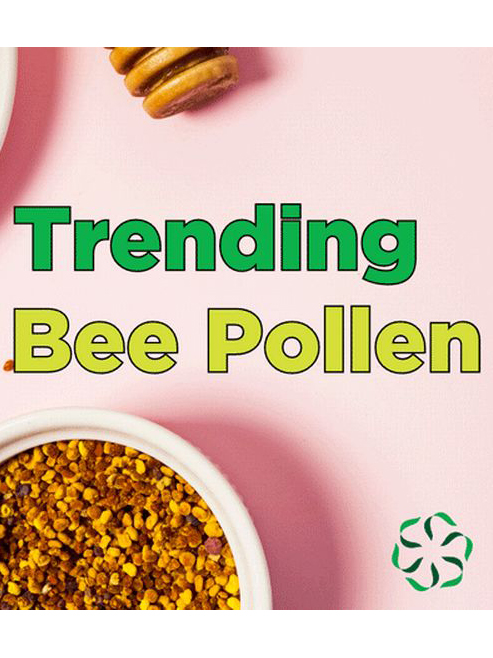
News from CRIS: Trending - Bee Pollen
March 21, 2022
It's not just seasonal allergies people associate with pollen. In this post, the Center for Research on Ingredient Safety looks at a trending ingredient, bee pollen.
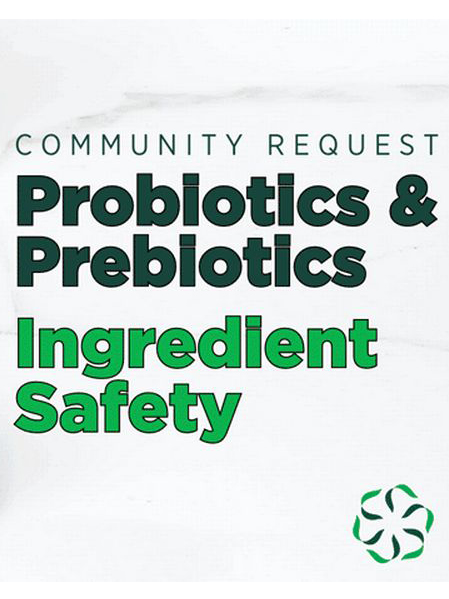
News from CRIS: Probiotics & Prebiotics - Ingredient Safety
March 14, 2022
As requested by CRIS readership, this series looks at probiotics and prebiotics. This post looks at the ingredient safety around prebiotic and probiotic foods, focusing specifically on fermented foods.

Murphy and EITS Student Tyler Firkus Research Lake Trout Reproductive Response to Sea Lamprey Parasitism
March 10, 2022
IIT-affiliated faculty member, Dr. Cheryl Murphy, along with EITS graduate student Tyler Firkus, have recently published exciting research detailing the reproductive response of two types of Michigan lake trout found in Lake Superior — siscowets and leans — to sea lamprey parasitism, and the results coincide with a long-held evolutionary theory.

IIT Annual Report 2021
March 8, 2022
The 2021 IIT Annual Report is now available to view online. We hope you will take the time to browse through the report and keep up-to-date with all of the IIT's latest news and accomplishments.

News from CRIS: Response to EFSA's Draft Opinion on BPA
March 8, 2022
CRIS experts delve into the scientific literature and respond to EFSA's draft opinion on the ingredient bisphenol A (BPA).

News from CRIS: Probiotics & Prebiotics - Foods & Supplements
February 28, 2022
As requested by CRIS readership, this series looks at probiotics and prebiotics. This post looks at the foods, ingredients, supplements, and products containing probiotics and prebiotics that can impact our health.

News from CRIS: Probiotics & Prebiotics - Microbiome Background
February 21, 2022
The Center for Research on Ingredient Safety is launching a new series looking at probiotics and prebiotics. This post will provide some background to help us understand how probiotics and prebiotics can impact our health.

News from CRIS: Trending - Hot Sauce Nutrition
February 14, 2022
The Center for Research on Ingredient Safety took a high-level look at hot sauce in chili peppers in their last post. In this post, they will dig deeper and explore the nutritional qualities of spicy foods.

Tiedje Elected Foreign Member of Chinese Academy of Sciences
February 9, 2022
IIT-affiliated faculty member, Dr. James Tiedje, was recently elected a foreign member of the Chinese Academy of Sciences for 2021.

News from CRIS: Trending - Hot Sauce Overview
February 7, 2022
Hot sauce is one of the fastest-growing condiments beloved by many cultures for the sharp, at times uncomfortable, flavor and sensation it imparts on foods. In this series, the Center for Research on Ingredient Safety looks at hot sauces.

News from CRIS: Trending - Nail Polish
February 1, 2022
In this post, the Center for Research on Ingredient Safety will be taking an in-depth look at nail polish and nail polish ingredients.

Li and Research Team Receive USDA Grant to Explore Ways to Mitigate Crop Uptake of PFAS
January 25, 2022
IIT-affiliated faculty member, Dr. Hui Li, along with a team of researchers, was recently awarded a $750,000 USDA grant to explore ways to mitigate crop uptake of per- and polyfluoroalkyl substances (PFAS).
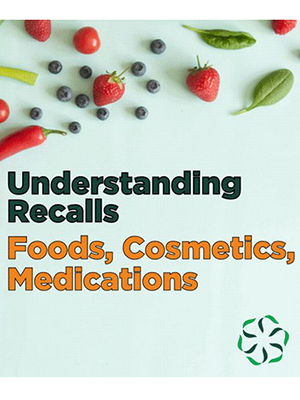
News from CRIS: Understanding Recalls - Food, Cosmetics, Medications
January 25, 2022
We often hear news stories about manufacturers recalling products for various reasons. In this post, the Center for Research on Ingredient Safety explores the basics of recalls.

News from CRIS: Trending - Nootropics
January 18, 2022
Are you familiar with products marketed as nootropics? In this post, we explore nootropics and the products that may be sold as nootropics.

Strakovsky Awarded 2021 Lou Guillette Jr. Outstanding Young Investigator by HEEDS
January 17, 2022
IIT-affiliated faculty member, Dr. Rita Strakovsky, was recently awarded the 2021 Lou Guillette Jr. Outstanding Young Investigator by HEEDS - Healthy Environment and Endocrine Disrupter Strategies.

Atchison Retires After 39 Years at MSU
January 5, 2022
IIT-affiliated faculty member, Dr. William Atchison, has retired from Michigan State University after 39 years of distinguished service.

Tiedje Recognized as One of MSU's Most Highly Cited Researchers
December 16, 2021
IIT-affiliated faculty member, Dr. James Tiedje, has been recognized as one of eleven Michigan State University researchers named in the 2021 Highly Cited Researchers List compiled by Clarivate Analytics.

Morishita Leading Study on Reducing Children's Exposure to Lead Dust
December 14, 2021
IIT-affiliated faculty member, Dr. Masako Morishita, is leading a study of whether portable air filters can mitigate lead exposure and reduce lead levels in the blood of children who live in older houses. The three-year study is supported by a $700,000 grant from the U.S. Department of Housing and Urban Development.

News from CRIS: Trending - Sweeteners
December 13, 2021
It’s the holiday season, which means holiday baking, candy, and other sweet confectionaries abound. In this post, the Center for Research on Ingredient Safety highlights the different types of ingredients that make our foods sweet.

News from CRIS: Preservatives & Refrigeration
December 8, 2021
In prior posts, the Center for Research on Ingredient Safety discussed the importance of preservative ingredients in our food supply. In this post, they discuss ways preservative ingredients in conjunction with refrigeration work to help ensure your food remains safe and healthy.

Gulbransen and Team Discovering the Logic of the Body's 'Second Brain'
December 1, 2021
IIT-affiliated faculty member, Dr. Brian Gulbransen, along with his research team were recently featured on MSUToday for their research on the body's 'second brain', the human gut enteric nervous system.

News from CRIS: Trending - Flavored Seltzer Water
November 30, 2021
Over the last few years, we’ve seen flavored seltzer water become a popular product with new brands and exciting flavors popping up in our stores. In this post, the Center for Research on Ingredient Safety explores flavored seltzer waters.

News from CRIS: Trending - Tryptophan
November 16, 2021
It’s turkey time! That means we hear more about tryptophan found naturally in turkey. In this post, the Center for Research on Ingredient Safety explores tryptophan.

News from CRIS: Publication Spotlight - Cannabidiol CBD Research
November 2, 2021
We’re thrilled to bring to your attention two projects the Center for Research on Ingredient Safety has recently completed on CBD.

IIT Update Newsletter October 2021
October 27, 2021
The October 2021 IIT Update Newsletter is now available to view online. We hope you will take the time to browse through the newsletter and keep up-to-date with all of the IIT's latest news.

News from CRIS: Cultivated Meat & Seafood - What to Expect
October 25, 2021
In this series, the Center for Research on Ingredient Safety has explored cultivated meat and seafood. In this post, they look at the products that may be the first type on the market and answer some lingering questions.

News from CRIS: Cultivated Meat & Seafood - Regulations
October 18, 2021
The Center for Research on Ingredient Safety has looked at cultivated meat and seafood in this series. In this post, they discuss the safety and future regulations of these products from a U.S. perspective.

Blevins and Team Publish Exciting Research on Dioxin-like Compounds Effects on the Human B Cell and Immune Response
October 12, 2021
IIT-affiliated faculty member, Dr. Lance Blevins, along with colleagues, Dr. Norbert Kaminski, Dr. Jiajun Zhou, and Robert Crawford, are working on exciting research on dioxin-like compounds effects on the human B cell and its natural immune response properties.

News from CRIS: Cultivated Meat & Seafood - Technology
October 11, 2021
In this series, the Center for Research on Ingredient Safety is looking at cultivated meat and seafood. In this post, they take a look at the emerging technology enabling cultivated meat and seafood production.

News from CRIS: Cultivated Meat & Seafood - Background
October 5, 2021
In this series, the Center for Research on Ingredient Safety explores traditional meat and seafood alternatives that represent an emerging food technology poised to change our foodscape.

Hui Li Leads Team Awarded $2 Million EPA Grant to Study the Impact of Current Biosolid Treatment Methods
September 30, 2021
IIT-affiliated faculty member, Hui Li, is leading a team of researchers recently awarded a $2 million EPA grant to study the impact of current biosolid treatment methods used by wastewater treatment facilities on a variety of pollutants in soil, water and plants.

News from CRIS: Regulation - Understanding Proposition 65
September 28, 2021
The Center for Research on Ingredient Safety has looked at the federal regulations governing our food, cosmetics, and other ingredients in the USA. This post looks at state legislation that’s frequently the center of attention, Proposition 65.

Kin Sing Lee and Graduate Student Morteza Sarparast Awarded Pearl J. Aldrich Endowments
September 16, 2021
IIT-affiliated faculty member, Kin Sing Lee, as well as his graduate student, Morteza Sarparast, were both recently selected for 2022 MSU Pearl J. Aldrich Endowment awards.

News from CRIS: Trending - Aflatoxins
September 15, 2021
We periodically see pet food recalled for aflatoxin contamination. In this post, the Center for Research on Ingredient Safety looks at aflatoxin contamination and puts it into context.

Poole Hardy Awarded K99/R00 from National Institute of Diabetes and Digestive and Kidney Diseases
September 9, 2021
EITS alumna and former IIT training grant postdoctoral fellow, Dr. Lauren Poole Hardy, was recently awarded a K99/R00 from the National Institute of Diabetes and Digestive and Kidney Diseases (NIDDK) for her project, “Novel mechanisms linking blood coagulation to liver fibrosis.”
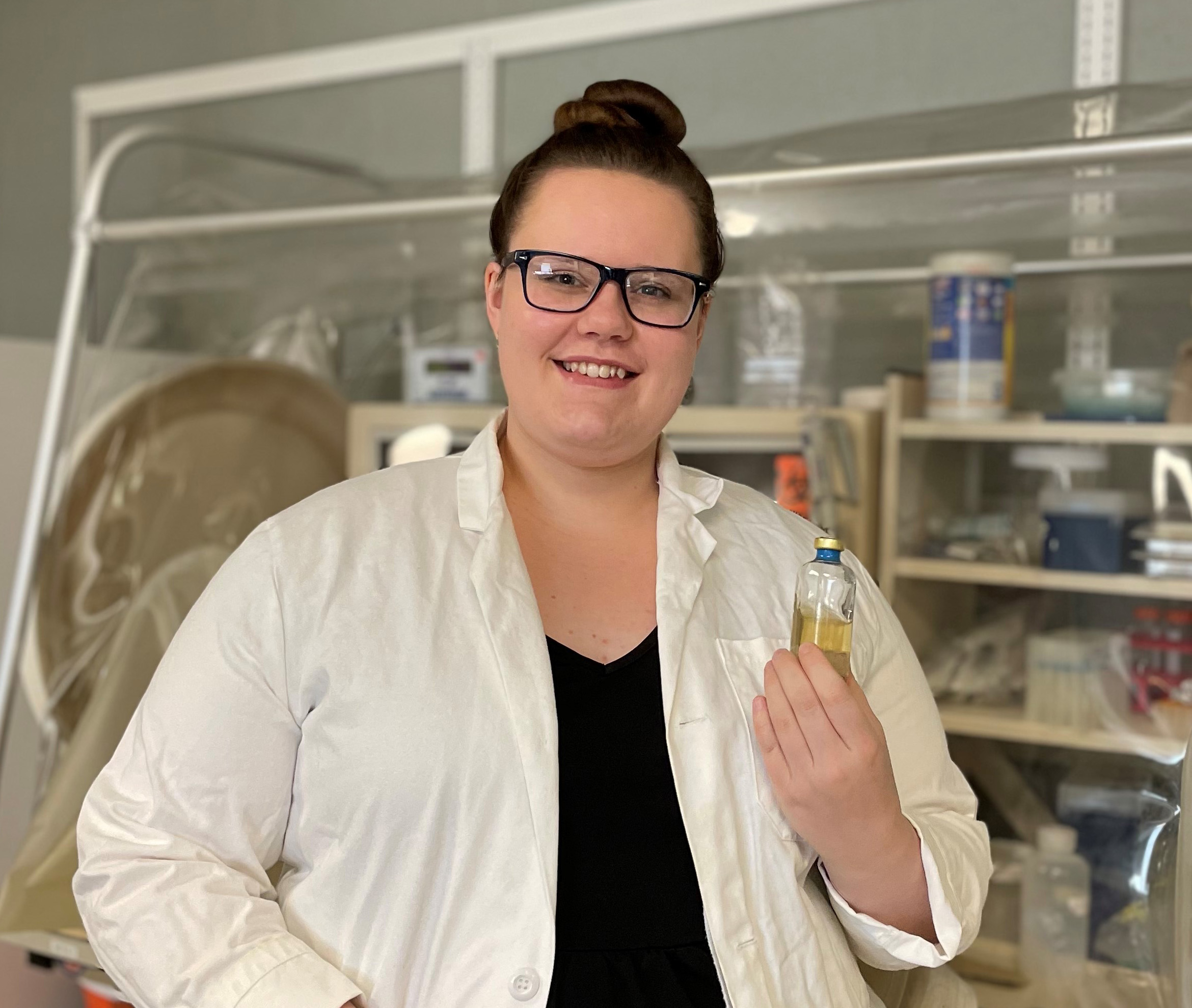
EITS Student Morgen Clark Featured on MSUToday in Student Perspective
September 7, 2021
EITS graduate student, Morgen Clark, was recently featured on MSUToday for her student perspective on joining a research lab at the start of a pandemic.

News from CRIS: Trending - Chlorpyrifos
September 6, 2021
Recently, U.S. federal regulators banned the pesticide chlorpyrifos for agricultural use. In this post, the Center for Research on Ingredient Safety takes a look at this chemical and explains what this means.

McCabe Named New Assistant Vice President for the Office of Regulatory Affairs at MSU
September 2, 2021
IIT-affiliated faculty member, Laura McCabe, was recently appointed the new assistant vice president for the Office of Regulatory Affairs at MSU.

News from CRIS: Director's Message August
September 2, 2021
As we embark on a new academic year at Michigan State University, I wanted to reach out and update you on the great work we're undertaking at CRIS.

EITS Graduate Kathryn Wierenga Selected for New Investigator Award at ISSFAL 2021 Virtual Congress
August 24, 2021
Recent EITS graduate, Kathryn Wierenga, received the New Investigator Award from the International Society for the Study of Fatty Acids and Lipids (ISSFAL) 2021 Virtual Congress.

News from CRIS: Hand Sanitizer - Overview
August 16, 2021
As we head back to work and school, many of us are restocking on hand sanitizers. In this post, the Center for Research on Ingredient Safety takes a look at hand sanitizer ingredients so you can make the best choice for yourself and your family.

News from CRIS: Fragrances - Overview
August 10, 2021
In this series, the Center for Research on Ingredient Safety looks at the fragrances we encounter in our everyday lives. In this post, they take a general look at fragrances.

EITS Student Jessica Moerland Awarded the Barnett Rosenberg Endowment Research Assistantship
August 5, 2021
EITS graduate student, Jessica Moerland, received the Barnett Rosenberg Endowment Research Assistantship for the academic year 2021 – 2022.

News from CRIS: Insect Repellant - DEET
August 3, 2021
In their last post, the Center for Research on Ingredient Safety looked at insect repellents available to us. They established that EPA-registered products are known to be the most effective. In this post, they look at one of the most commonly used EPA-registered insect repellent ingredients: DEET.

EITS Student Azam Sher Leads Public Health Outreach in Pakistan
July 27, 2021
EITS graduate student Azam Sher leads a nonprofit, Kher-Kun, which aims to provide public health education to far-flung Pakistani villages with outreach efforts that include, among other avenues, webinars and virtual trainings.
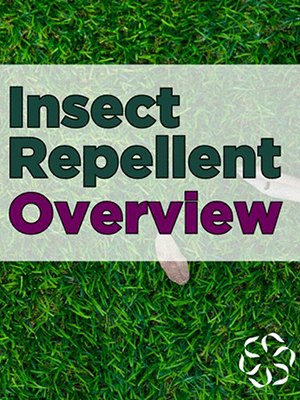
News from CRIS: Insect Repellant - An Overview
July 27, 2021
As bugs swarm in some parts of the world, the Center for Research on Ingredient Safety looks at bug repellents that can help protect us from biting insects.

Three IIT-Affiliated Faculty Receive Promotions
July 13, 2021
The IIT would like to congratulate three affiliated faculty members who recently received faculty promotions. Dr. Karen Liby was promoted to Professor and Dr. Jamie Bernard and Dr. Gina Leinninger were promoted to Associate Professor.

News from CRIS: Packaging - Active Biofilms, Biofilms, and Films
July 12, 2021
In this series, the Center for Research on Ingredient Safety explores packaging ingredients. In this post, they take a look at terms that will help us better understand packaging ingredients and emerging packaging technology: active biofilms, biofilms, and films.

News from CRIS: Packaging - Plant-based Plastics
June 29, 2021
In this series, the Center for Research on Ingredient Safety explores packaging ingredients. This post looks at plant-based plastics poised to replace some of the petroleum-based plastic packaging products.

IIT Update Newsletter June 2021
June 24, 2021
The June 2021 IIT Update Newsletter is now available to view online. We hope you will take the time to browse through the newsletter and keep up-to-date with all of the IIT's latest news.

News from CRIS: Packaging - Plastic Wrap
June 22, 2021
In this series, the Center for Research on Ingredient Safety explores packaging ingredients. In this post, they look at the main ingredients that make up the food-safe plastic wrap we use at home.

News from CRIS: Food, Medicine & Cosmetic Packaging - Overview
June 15, 2021
We’re all familiar with packaging. In this series, The Center for Research on Ingredient Safety explores the packaging used on our food, medicine & cosmetic items. In this post, they create an overview of packaging and ingredients that come into contact with products we use and consume daily.

News from CRIS: Trending - Alpha-Hydroxy Acids
June 8, 2021
We find alpha-hydroxy acids ingredients in many popular cosmetic products, and it continues to be a popular ingredient topic on social media. In this post, the Center for Research on Ingredient Safety explores alpha-hydroxy acids and what it means for you.

News from CRIS: Trending - Polyvinyl Alcohol
May 26, 2021
Whether we're doing laundry or running a dishwasher, most of us are familiar with detergent products that come in a pod. In this post, the Center for Research on Ingredient Safety will look at the material used to make these pods, polyvinyl alcohol.

News from CRIS: Trending - Mung Bean Protein
May 18, 2021
In the Center for Research on Ingredient Safety's last posts, they looked at soybean proteins and potato proteins used in alternative meats. In this post, they take a look at mung bean protein.

IIT Welcomes Four New Faculty
May 12, 2021
The IIT is pleased to welcome four new faculty members this spring - Dr. Lance Blevins, Dr. Brian Johnson, Dr. Rance Nault, and Dr. David Tonucci.

News from CRIS: Trending - Potato Protein
May 11, 2021
In the Center for Research on Ingredient Safety's last post, they looked at soybean proteins used in artificial meats. However, there are more than one or two vegetable-based proteins used to create synthetic meat products. In this post, they take a look at potato protein.

News from CRIS: Trending - Soy Protein
May 4, 2021
Veggie burgers and meat alternatives continue to hit the market. In this post, the Center for Research on Ingredient Safety looks at another ingredient commonly found in these products, soy protein.
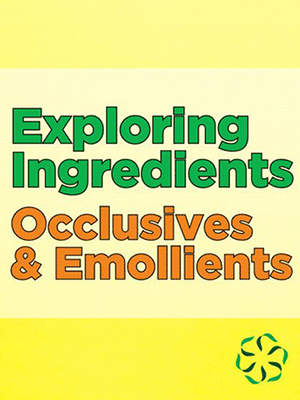
News from CRIS: Exploring Ingredients - Occlusives & Emollients
April 27, 2021
In their last post, the Center for Research on Ingredient Safety broke down lotion ingredients. In this post, they look at two types of cosmetic ingredients: occlusives and emollients.

News from CRIS: Exploring Product Ingredients - Lotion
April 20, 2021
In this post, the Center for Research on Ingredient Safety breaks down the ingredient labels on four lotions to show the ingredients' most common purpose in the formulation.

Bernstein Receives Outstanding New Environmental Scientist Award
April 15, 2021
IIT-affiliated faculty member Alison Bernstein has received an Outstanding New Environmental Scientist Award from the National Institute of Environmental Health Sciences for her project, “Dieldrin-induced differential gene methylation and parkinsonian toxicity.”

News from CRIS: Chemophobia - Fearing Chemicals
April 14, 2021
When it comes to chemicals, it can be hard to untangle the facts from the fear (some of it's necessary fear). In this post the Center for Research on Ingredient Safety explores chemophobia.

Remembering Dr. Jerry Hook
April 13, 2021
The Institute for Integrative Toxicology is sad to share the news of the passing of Dr. Jerry Hook, an esteemed colleague, on January 9, 2021.

News from CRIS: Cosmetics - Labeling
April 7, 2021
Most of us use cosmetics daily. In this post, the Center for Research on Ingredient Safety takes a look at cosmetic product labeling and how we can make informed choices by reading and understanding our products' packaging.

News from CRIS: Trending - Collagen
March 30, 2021
We see collagen supplements and cosmetics regularly trend. In this post, the Center for Research on Ingredient Safety takes a deeper look at collagen.

IIT Faculty Help Lead the Way in Environmental Antimicrobial Resistance Research at MSU
March 29, 2021
IIT-affiliated faculty members Jim Tiedje and Hui Li are part of a team of Michigan State University researchers that have helped MSU rank ninth globally in the amount of research published related to environmental antimicrobial resistance.

News from CRIS: Trending - Botanicals
March 22, 2021
We’ve seen a rise in botanical products hitting the market. In this post, the Center for Research on Ingredient Safety explores these trending ingredients.
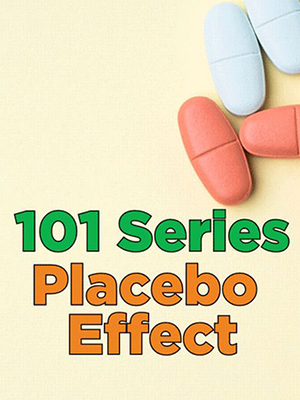
News from CRIS: 101 Series - Placebo Effect
March 16, 2021
The Center for Research on Ingredient Safety has discussed ingredients with purported health benefits that aren't supported by research, but why do these ingredients continue to sell if they don't work? In this post, they explore the connection between our brain and our body in the placebo effect.

IIT Annual Report 2020
March 10, 2021
The 2020 IIT Annual Report is now available to view online. We hope you will take the time to browse through the report and keep up-to-date with all of the IIT's latest news and accomplishments.

News from CRIS: Vaccine Safety - J&J Vaccine
March 9, 2021
In previous posts, the Center for Research on Ingredient Safety explored vaccine safety and the newest COVID-19 mRNA vaccines. In this post, they explore the newest COVID-19 vaccine available.

Kaminski Featured in LSJ for Research with GB Sciences on Cannabis-based Drug to Fight COVID-19 Inflammation
March 2, 2021
IIT Director Norbert Kaminski was recently featured in the Lansing State Journal for promising new research he is conducting with GB Sciences, a biopharmaceutical company, to develop a drug that prevents the lung inflammation that some experience after contracting COVID-19 that can lead to trouble breathing and death.

News from CRIS: Trending - Adaptogen Ingredients
March 2, 2021
In the Center for Research on Ingredient Safety's new trending series, they look at topics making the rounds in the digital sphere. In this post, they take a look at a new trending "class" of ingredients called adaptogens.

News from CRIS: Heavy Metals in Baby Food
February 23, 2021
We’ve seen the headlines; some baby foods contain heavy metals, but what does that mean? In this post, the Center for Research on Ingredient Safety breaks down the report to help keep you informed.
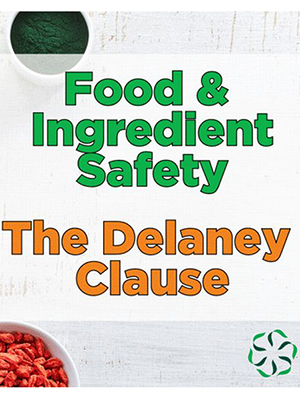
News from CRIS: Food & Ingredient Safety - Food Additives: Delaney Clause
February 16, 2021
In their last post, the Center for Research on Ingredient Safety took a high-level look at the Food Additives Amendment of 1958. In this post, they dive into one section of the amendment that's generated many conversations and much confusion: the Delaney Clause.

News from CRIS: Food & Ingredient Safety - Food Additives
February 9, 2021
In this series, the Center for Research on Ingredient Safety takes a look at the Food Additives Amendment of 1958.

Felicia Wu named Fellow of the Society for Risk Analysis
February 4, 2021
IIT-affiliated faculty member Felicia Wu was recently named Fellow of the Society for Risk Analysis for her achievements in risk analysis and science policy, and service to the organization.

News from CRIS: 101 Series - Food Dye
February 2, 2021
In this post, the Center for Research on Ingredient Safety explores food-safe dyes found in many products we consume daily.
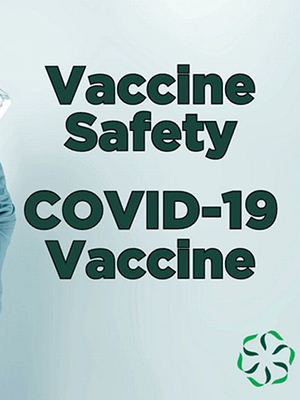
News from CRIS: Vaccine Safety - COVID-19 Vaccine
January 26, 2021
In this series, the Center for Research on Ingredient Safety is exploring vaccines, the ingredients found in vaccines, and vaccine safety. In this post, they look at the currently available COVID-19 vaccines in the U.S. and the ingredients that make up these vaccines.
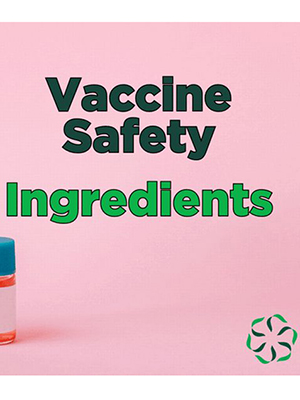
News from CRIS: Vaccine Safety - Ingredients
January 19, 2021
In this series, the Center for Research on Ingredient Safety is exploring vaccines, the ingredients found in vaccines, and vaccine safety. In this post, they take a look at vaccine ingredients and their function.

News from CRIS: Vaccine Safety - Background
January 12, 2021
In this series, the Center for Research on Ingredient Safety is exploring vaccines, the ingredients found in vaccines, and vaccine safety. In this post, they take a look at vaccines and how they work.

News from CRIS: Update from the CRIS Director
January 5, 2021
An update on the Center for Research on Ingredient Safety's great successes in 2020 and their exciting goals for 2021.

IIT Update Newsletter Fall 2020
December 22, 2020
The IIT Fall 2020 Update Newsletter is now available to view online. We hope you will take the time to browse through the newsletter and keep up-to-date with all of the IIT's latest news.

Upham Awarded R21 Grant to Develop High-Throughput Toxicity Screening Assay
December 21, 2020
IIT-affiliated faculty member, Brad Upham, was recently awarded a $445,403 National Institutes for Environmental Health Sciences R21 grant for his project, “High-throughput toxicity screening of environmental contaminants and drug candidates using a novel gap junction intercellular communication bioassay in lung and liver cells.”

Wagner, Harkema & Team Connect Diabetes, Air Pollution to Interstitial Lung Disease
December 17, 2020
IIT-affiliated faculty members James Wagner and Jack Harkema, along with a team of scientists, recently published a new study in Environmental Health Perspectives connecting insulin resistance and repetitive ozone exposure to the development of interstitial lung disease.
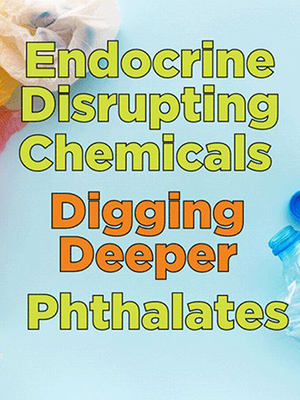
News from CRIS: Endocrine Disrupting Chemicals - Digging Deeper: Phthalates
December 15, 2020
In this post, the Center for Research on Ingredient Safety looks at a group of chemicals identified as having endocrine disrupting properties, phthalates.

News from CRIS: 2020 CBD Science Symposium Now Available Online
December 10, 2020
The Center for Research on Ingredient Safety's 2020 CBD Science Symposium is now available to view online. Sessions from researchers, lawyers, and industry experts on cannabidiol (CBD) can be viewed on the CRIS YouTube channel.

Three IIT-Affiliated Faculty Awarded by College of Human Medicine
December 7, 2020
Three IIT-affiliated faculty members were recently selected for prestigious awards by the College of Human Medicine at their annual awards ceremony.

News from CRIS: Endocrine Disrupting Chemicals - Overview
December 3, 2020
In the Center for Research on Ingredient Safety's last post, they reviewed the basics around our endocrine system and how our endocrine system functions. In this post, they’ll explore endocrine disrupting chemicals further.

Tewari-Singh Lab Investigating the Immune Mechanism of Mustard Gas Toxicity
November 23, 2020
IIT-affiliated faculty member Neera Tewari-Singh recently began work on a Department of Defense Tier 1 Discovery award focused on identifying a novel immune mechanism of mustard gas (sulfur mustard; SM) toxicity, which could also be applicable to other chemical exposures in Gulf War Illness (GWI).

Wu Joins Team Awarded $9.8 Million to Study Low-Moisture Food Safety
November 19, 2020
IIT-affiliated faculty member Felicia Wu joins a team of researchers awarded a five-year, $9.8 million grant from the U.S. Department of Agriculture National Institute of Food and Agriculture (USDA NIFA) that takes a holistic look at reducing threats of pathogens in low-moisture foods.
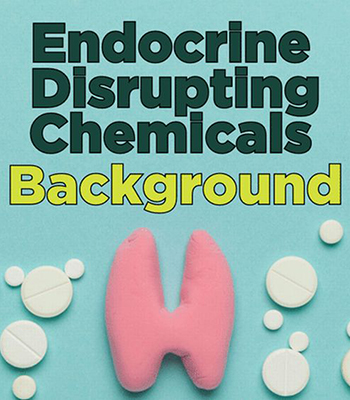
News from CRIS: Endocrine Disrupting Chemicals - Background
November 17, 2020
Many of us have heard of endocrine disrupting chemicals. In this series, the Center for Research on Ingredient Safety takes a look at endocrine disrupting chemicals found in our daily lives. In this post, they talk about the basics of our endocrine system and why it’s important to our health.

Groundbreaking Research in the Robison Lab Illuminates the Opaque Pathways of Depression
November 9, 2020
IIT-affiliated faculty member A.J. Robison and his lab are using new CRISPR-based technology to uncover pathways of depression-like behavior in the mouse brain.

News from CRIS: Cosmetics - Digging Deeper: Natural & Conventional Toothpaste
November 3, 2020
In this post, the Center for Research on Ingredient Safety takes a look at toothpaste ingredients and explores a few trending ingredients.

Two IIT-Affiliates Receive Awards at MI SOT Annual Fall Meeting
October 27, 2020
The Michigan Regional Chapter of the Society of Toxicology recently held their annual fall meeting, "New Approach Methodologies and the Future of Toxicology," on October 16, 2020. Two IIT-affiliated students received awards at this meeting.

News from CRIS: Cosmetics - Digging Deeper: Natural & Conventional Deodorant
October 20, 2020
In the Center for Research on Ingredients Safety's last post, they explored natural cosmetic products. In this post, they check out deodorant, a product that now comes in natural and conventional variations.

News from CRIS: Cosmetics - Natural, Organic & Conventional
October 12, 2020
There’s been a recent surge in all-natural and organic cosmetic products. In this post, the Center for Research on Ingredient Safety explores these labels and how they impact products.
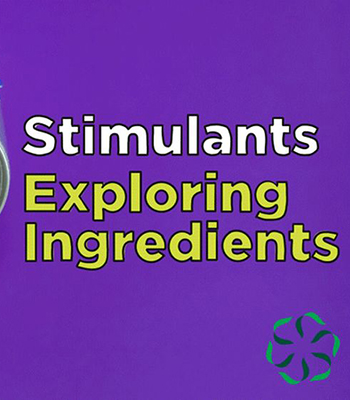
News from CRIS: Stimulants - Exploring Ingredients
October 5, 2020
The Center for Research on Ingredient Safety explores the safety of stimulant ingredients found in foods, beverages, and dietary supplements.

News from CRIS: Stimulants - Overview
September 28, 2020
What do you know about stimulants like energy drinks, coffee, and more? In this series, the Center for Research on Ingredient Safety covers stimulant ingredients and the safety of stimulants.

Strakovsky and Team Awarded $2.1 Million Grant to Study Chemical Effects on Women's Health Post-Pregnancy
September 24, 2020
A team of scientists led by IIT-affiliated faculty member, Rita Strakovsky, has been awarded a five-year, $2.1 million NIH grant to study the long-term effects of phthalate exposure on mothers four to seven years after giving birth.

News from CRIS: Digging Deeper - Sodium Aluminum Phosphate
September 22, 2020
Are you familiar with the ingredient, sodium aluminum phosphate? Over the years, it's been identified by some as an ingredient that causes harm. This post explores this ingredient's safety to see if sodium aluminum phosphate poses a health risk.

News from CRIS: Update from the CRIS Director
September 17, 2020
Learn about CRIS's next steps, research objectives and ongoing initiatives.

IIT Update Newsletter Summer 2020
September 15, 2020
The IIT Summer 2020 Update Newsletter is now available to view online. We hope you will take the time to browse through the newsletter and keep up-to-date with all of the IIT's latest news

Nault and MSU Superfund Team Publish Exciting Developments in Single-Cell RNA Sequencing
September 10, 2020
Postdoctoral researcher and EITS alumnus, Rance Nault, in collaboration with a team of MSU Superfund scientists including Kelly Fader, Sudin Bhattacharya and Timothy Zacharewski, recently published exciting research on single-cell RNA sequencing.

News from CRIS: Essential Oils - Digging Deeper Tea Tree Oil
August 31, 2020
In the Center for Research on Ingredient Safety's last post, they looked at lavender essential oil. There are many other popular essential oils on the market. This post looks at one of the most common essential oil used and studied: Tea Tree Oil.

News from CRIS: Essential Oils - Digging Deeper Lavender Oil
August 25, 2020
In the Center for Research on Ingredient Safety's last post, they took a look at essential oils. There are many popular essential oils on the market. In this post, they take a look at one of the most common essential oils used and studied: lavender oil.

Bhattacharya Awarded NIEHS Grant to Study TCDD-Induced Changes in Gene Expression
August 18, 2020
IIT-affiliated faculty member, Dr. Sudin Bhattacharya, was recently awarded a $2,355,648 grant from the National Institute for Environmental Health Sciences for his project, "Integrative Transcriptional and Epigenomic Modeling of Xenobiotic-Activated Gene Regulatory Networks."

News from CRIS: Essential Oils - An Overview
August 17, 2020
Over the years, the popularity of essential oils has soared with some people claiming essential oils have curative properties and could be used as an alternative to prescription medications. In this post, the Center for Research on Ingredient Safety covers the basics of essential oils.

Bernard Awarded R01 Grant to Study How Obesity Impacts the Carcinogenicity of Chemical Exposure
August 6, 2020
IIT-affiliated faculty member, Dr. Jamie Bernard, was recently awarded a R01 grant from the National Institute for Environmental Health Sciences for her project, "Mechanistic Role of Obesity in Benzo(a)pyrene-initiated Cancer."

News from CRIS: Trace Contaminants & Residues - Water
August 4, 2020
In this series, the Center for Research on Ingredient Safety explores trace contaminants and residues. In this post, they take a look at water and the guidelines and regulations that keep our water safe.

Three Adjunct Faculty Join IIT in 2020
July 27, 2020
The IIT is pleased to welcome three new adjunct faculty members to our ranks in 2020 - Dr. Lyle Burgoon, Dr. Rory Conolly, and Dr. Peer Karmaus.

News from CRIS: Trace Contaminants & Residues - Packaging
July 27, 2020
As the Center for Research on Ingredient Safety has discussed in prior posts, trace contaminants and residues can make their way into our food system. In this post, they will discuss the important role of packaging.

News from CRIS: Trace Contaminants & Residues - Pesticides
July 21, 2020
While the idea of pesticides can invoke many strong emotional responses, in this post, the Center for Research on Ingredient Safety explores pesticides’ purpose, how they end up in our food and water, and if they pose harm to human health.
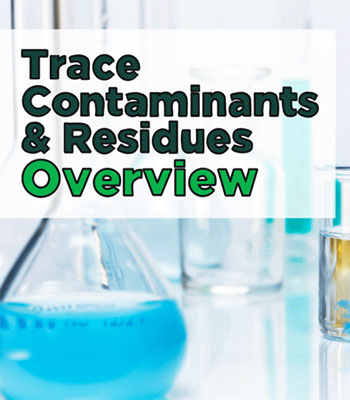
News from CRIS: Trace Contaminants & Residues - An Overview
July 14, 2020
In this series, the Center for Research on Ingredient Safety explores trace contaminants and residues that can make their way into our food and water system. In this post, they will give a general overview of trace contaminants and residues.

News from CRIS: Risk - Exploring the Risk Assessment Process
July 7, 2020
When looking at ingredients, contaminants, residues, & more that we're exposed to regularly, researchers use a risk assessment to derive permissible exposure levels. In this post, the Center for Research on Ingredient Safety looks at the risk assessment process & how it can inform product safety.

Quarterly Publication Update June 2020
June 30, 2020
Every quarter we will be featuring recent publications by IIT-affiliated faculty, students and alumni; this is our second edition. Explore the links to learn more about the exciting research happening at the IIT and MSU!

News from CRIS: Summer Cookout - Sunscreens
June 16, 2020
As the weather heats up for many of us and we begin to spend time outside at summer cookouts (as social distancing allows), the Center for Research on Ingredient Safety is taking a fresh look at a few ingredients that make summer cookouts safe and fun. In this post, they explore sunscreens.
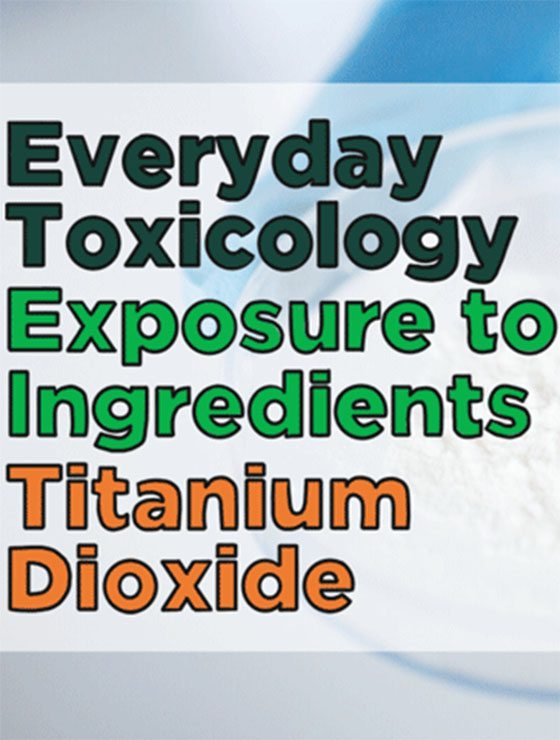
News from CRIS: Everyday Toxicology - Exposure to Ingredients: Titanium Dioxide
June 11, 2020
In prior posts, the Center for Research on Ingredient Safety has discussed the many routes we’re exposed to ingredients. In this post, they take a deeper look at the ingredient titanium dioxide to explore how exposure routes impact research and health outcomes.

Wu Receives Grant to Study Fungus that Causes Liver Cancer
June 8, 2020
IIT-affiliated faculty member, Felicia Wu, along with MSU colleague, David Hennessy, were recently awarded a $478,000 USDA-National Institute of Food and Agriculture, or NIFA, grant for their project "Aflatoxin Reduced By Bt Corn? Examining Crop Insurance Claims for Real World Impacts of Technologies for Food Safety."

IIT-Affiliated Faculty Help Form New Center for PFAS Research at MSU
June 4, 2020
Six IIT-affiliated faculty members, Drs. Cheryl Murphy, Sudin Bhattacharya, Courtney Carignan, A. Daniel Jones, Hui Li, and Brian Teppen, have recently joined forces with nine other researchers across campus to form the Center for PFAS Research. This group, with knowledge spanning diverse fields across campus, are linking their expertise in an effort to understand more about PFAS and its effects on health and the environment.

R25 Grant Renewed for Additional Five Years
June 2, 2020
The MSU R25 Research Education Program grant, “First-Time Research Experience in Environmental Health Science,” was recently renewed for an additional five years. This National Institute of Environmental Health Sciences (NIEHS) grant is co-directed by IIT-affiliated faculty members, Dr. James Luyendyk and Dr. William Atchison.

EITS Student Jenna Strickland Awarded John A. Penner Fellowship in Hematology, Thrombosis and Inflammation
May 28, 2020
EITS graduate student, Jenna Strickland, was one of two students to receive the John A. Penner Fellowship in Hematology, Thrombosis and Inflammation for the academic year 2020-2021. Strickland is a student working with Dr. Bryan Copple.

Wu Participates in SRA Webinar - Covid Conversations on Risk: Food Safety and Security
May 26, 2020
IIT-afilliated faculty member, Felicia Wu, was recently featured on the Society of Risk Analysis (SRA) COVID Conversations on Risk webinar discussing food safety and security during the COVID-19 pandemic.

News from CRIS: Food & Ingredient Safety - Current Good Manufacturing Practices (CGMP)
May 21, 2020
In several past posts the Center for Research on Ingredient Safety has mentioned Current Good Manufacturing Practices, but what are those practices and what do they mean for consumers? In this post, they explore Current Good Manufacturing Practices as it relates to food and ingredient safety.

IIT Update Newsletter Spring 2020
May 11, 2020
The IIT Spring 2020 Update Newsletter is now available to view online. We hope you will take the time to browse through the newsletter and keep up-to-date with all of the IIT's latest news!

News from CRIS: Update from the CRIS Director
May 11, 2020
Learn about CRIS's next steps, research objectives and ongoing initiatives.
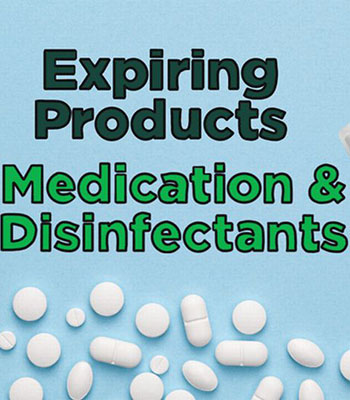
News from CRIS: Expiring Products - Disinfectants & Medications
May 6, 2020
Did you know medications and even disinfecting products expire? In this post, the Center for Research on Ingredient Safety covers the basics around medication and disinfectant product expiration dates.

News from CRIS: Expiring Products - Cosmetics
April 28, 2020
Did you know cosmetic products can expire? In this post, the Center for Research on Ingredient Safety covers the basics of cosmetic product expiration dates.

News from CRIS: Expiring Products - Food & Ingredients
April 21, 2020
Did you know foods, even shelf-stable foods like flour and canned foods, can expire? In this post, the Center for Research on Ingredient Safety covers the basics around food and ingredient expiration dates.

National COVID-19 Convalescent Plasma Website for Providers & Patients Launched
April 6, 2020
IIT-affiliated faculty member, Nigel Paneth, along with colleagues from Johns Hopkins University and the Mayo Clinic, is leading the development of the National Convalescent Plasma Project. The project includes 170 physician-scientists from 50 universities and hospitals across the nation studying the use of convalescent plasma in COVID-19 treatment and prevention.

News from CRIS: COVID-19 - Myth or Fact?
April 6, 2020
There is a lot of confusing information around COVID-19 and the novel coronavirus infections circulating on the Internet and social media forums. In this edition, the Center for Research on Ingredient Safety separates the myths from the facts.

News from CRIS: COVID-19 - Food & Ingredient Safety
April 1, 2020
As we’ve seen in recent weeks, our supply chain, especially our food supply chain, is paramount to keeping society fed and safe. But how do we know that food is safe from COVID-19? In this post, the Center for Research on Ingredient Safety explores the current state of food safety related to the novel coronavirus and our food.

News from CRIS: COVID-19 - Cleaning vs. Disinfecting
March 30, 2020
It’s easy to get overwhelmed with all of the information online, so the Center for Research on Ingredient Safety put together this post to help you safely clean and disinfect your home.
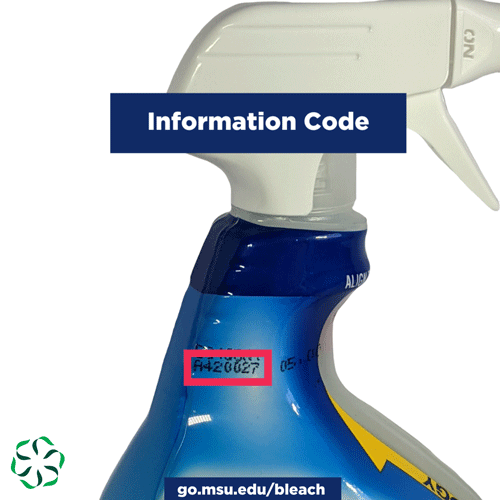
News from CRIS: COVID-19 - Disinfecting with Bleach
March 25, 2020
As we work together to combat the novel coronavirus that causes the disease commonly known as COVID-19, it’s essential to know how to create and use effective cleaning solutions. In this post, we explain how you can use liquid household bleach to disinfect hard surfaces.

Quarterly Publication Update March 2020
March 24, 2020
Every quarter we will be featuring recent publications by IIT-affiliated faculty, students and alumni; this is our first edition. Explore the links below to learn more about the exciting research happening at the IIT and MSU!

Poole Hardy Selected for 2020 JTH Editor's Award
March 3, 2020
IIT training grant postdoctoral fellow, Dr. Lauren Poole Hardy, was selected as one of six early career investigators to receive the Journal of Thrombosis and Haemostasis (JTH) 2020 Editors' Awards.

Luyendyk Receives 2020 SOT Achievement Award
February 20, 2020
IIT-affiliated faculty member, Dr. James Luyendyk, was selected to receive the 2020 SOT Achievement Award for his paradigm-shifting research on the role of the coagulation cascade in homeostasis of the liver and other organs.

Kaminski Receives 2020 SOT Merit Award
February 19, 2020
IIT Director, Dr. Norbert Kaminski, was selected to receive the 2020 SOT Merit Award for his sustained and highly influential contributions to the discipline of toxicology.

Wu Receives William J. Beal Outstanding Faculty Award
February 6, 2020
IIT-affiliated faculty member, Dr. Felicia Wu, was selected as one of ten MSU faculty to receive the William J. Beal Outstanding Faculty Award in 2020.

Wierenga Featured on Nature for Career Column
January 7, 2020
EITS graduate student, Kathryn Wierenga, was featured on Nature in a Career Column on "Embracing challenge: combining marathon training with graduate studies."
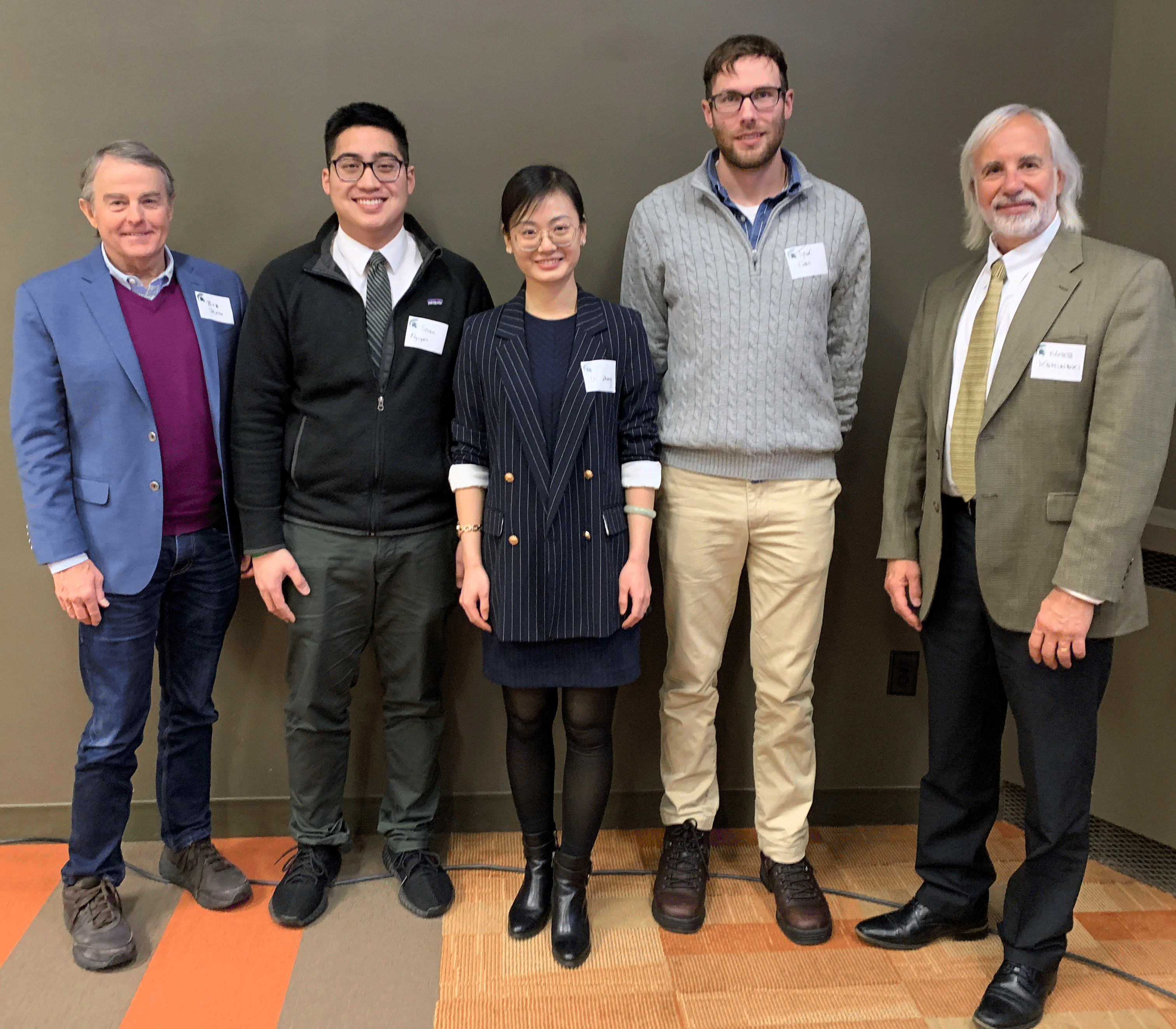
EITS Research Evening Celebrates Student Research
December 9, 2019
The Institute for Integrative Toxicology’s Annual Research Evening showcased trainees in the Environmental and Integrative Toxicological Sciences Graduate Training program and their accomplishments. This year’s event took place on Wednesday, December 4, 2019 in the Lincoln Room at the MSU Kellogg Center.

Goodman Named AAAS Fellow
December 3, 2019
IIT-affiliated faculty member, Dr. Jay Goodman, was recently awarded the distinction of Fellow by the American Association for the Advancement of Science (AAAS) along with five other distinguished MSU faculty members.

Neera Tewari-Singh Receives U01 Grant from the National Institutes of Health
November 14, 2019
IIT-affiliated faculty member, Neera Tewari-Singh, was recently awarded a $1.423 million U01 grant from the National Institutes of Health - Countermeasures Against Chemical Threats Program and National Institute of Arthritis and Musculoskeletal and Skin Diseases (NIAMS) for her project, "Targeted Therapeautic Approaches to Counteract Toxicity from Phosgene Oxime Skin Exposure."

A.J. Robison and Team Find Gender Distinct Circuit for Depression
November 7, 2019
IIT-affiliated faculty member, A.J. Robison, along with a team of scientists, has found a gender-distinct circuit for depression that activates during stress and is controlled by testosterone.

Karen Liby Selected for Mi-Kickstart and Mi-TRAC Awards
November 5, 2019
IIT-affiliated faculty member, Karen Liby, was recently selected for a Mi-Kickstart Award from the University of Michigan MTRAC for LIfe Sciences Innovation Hub for her project, "Novel Nrf2 Inhibitors." She also received a Mi-TRAC award in 2019 for her project, "Novel Rexinoids for Oncology."

EITS Alumnus Jinpeng Li Joins CRIS & IIT Faculty
October 29, 2019
Dr. Jinpeng Li, EITS alumnus, joins the Center for Research on Ingredient Safety as an assistant professor and the IIT as an affiliated faculty member.

Zhang Receives NCI Predoctoral to Postdoctoral Fellow Transition Award (F99/K00)
October 17, 2019
EITS graduate student, Di Zhang, is the recipient of a National Cancer Institute Predoctoral to Postdoctoral Fellow Transition Award (F99/K00) for her proposal, "Targeting the Nrf2 Pathway in Cancer."

Albers Receives Clifford Humphrys Fellowship for Preservation of Water Quality in the Great Lakes
October 15, 2019
EITS graduate student, Janice Albers, was selected as one of five recipients of the 2019 Clifford Humphrys Fellowship for Preservation of Water Quality in the Great Lakes.

Laura McCabe Named MSU Foundation Professor
October 8, 2019
IIT-affiliated faculty member, Laura McCabe, was recently named a MSU Foundation Professor.

New CRIS Research on Food Grade Titanium Dioxide
October 1, 2019
New research on the ingredient titanium dioxide (E 171) from the Center for Research on Ingredient Safety shows no evidence of adverse health outcomes.

Pacyga Selected for Environmental Health Scholars Retreat
September 17, 2019
EITS graduate student, Diana Pacyga, was selected as one of 15 trainees from across the country to participate in the prestigious Environmental Health Scholars Retreat held at Brown University.

Wierenga Selected for 2019 Gina M. Finzi Memorial Student Summer Fellowship Program
August 27, 2019
EITS graduate student, Kathryn Wierenga, was selected as one of six recipients to receive the prestigious 2019 Gina M. Finzi Memorial Student Summer Fellowship from the Lupus Foundation of America.

Norbert Kaminski Named CRIS Director
August 6, 2019
IIT Director, Dr. Norbert Kaminski, will also serve as the Director of the Center for Research on Ingredient Safety (CRIS) at MSU. His appointment comes after successfully serving as the center's interim director.

Harkema Receives Prestigious Thomas T. Mercer Joint Prize Award
July 11, 2019
IIT-affiliated faculty member, Dr. Jack Harkema, is the recipient of the 2019 Thomas T. Mercer Joint Prize Award from the American Association of Aerosol Research (AAAR) and the International Society for Aerosols in Medicine (ISAM).

Cheryl Murphy Receives Chandler-Misener Award Along with Team
June 14, 2019
IIT-affiliated faculty member, Dr. Cheryl Murphy, receives the Chandler-Misener Award from the Journal of Great Lakes Research, along with team of researchers.

EITS Student Kevin Baker Awarded John A. Penner Endowed Research Assistantship
May 9, 2019
EITS graduate student, Kevin Baker, received the John A. Penner Endowed Research Assistantship for the academic year 2019-2020. Baker is a student working with Dr. James Luyendyk.

EITS Student Vanessa Benham Authors LSJ Article
May 1, 2019
EITS student, Vanessa Benham, authored an excellent article, "Obesity poised to overtake smoking as leading preventable cause of cancer," for the Lansing State Journal. The article was picked up nationwide and published broadly.

Is Treating Drinking Water Enough to Limit PFAS Exposure?
April 30, 2019
IIT-affiliated faculty member, Courtney Carignan, is joining forces with researchers from three different states to tackle the question of environmental PFAS exposure.

Gina Leinninger Receives Prestigious New Investigator Award
April 22, 2019
IIT-affiliated faculty member, Dr. Gina Leinninger, is the 2019-20 recipient of the American Physiology Society's (APS), Central Nervous System Section New Investigator Award.

Goudreau Named Associate Dean for Research in College of Osteopathic Medicine
April 21, 2019
IIT-affiliated faculty member, John Goudreau, has been named the Michigan State University College of Osteopathic Medicine's associate dean for research. He also will be the co-director of the DO-PhD training program, a combined degree program where students are trained to become physician scientists.

Blood Holds Key to Liver Regeneration
March 8, 2019
Congratulations to IIT-affiliated faculty member, Dr. James Luyendyk, for being featured on MSU Today for his research related to liver regeneration.

Brain Health: Exploring the Role of Cannabis in Treating Serious Diseases
March 7, 2019
Congratulations to IIT Director, Dr. Norbert Kaminski, for being featured on MSUToday for his research on the role of cannabis in treating serious diseases.

Goodman Caps 48-Year Career with Excellence Award
March 6, 2019
IIT-affiliated faculty member, Dr. Jay Goodman, has been selected to receive the 2019 Pharmaceutical Research and Manufacturers of America Foundation Award in Excellence in Pharmacology/Toxicology from the PhRMA Foundation. Dr. Goodman's award and career were recently featured on MSUToday.

